Tarzan Jailed and Illegally Held Big Cats Confiscated
By SONJA ISGER
Palm Beach Post Staff Writer
LOXAHATCHEE — Former Tarzan movie actor Steve Sipek was released from jail this afternoon after authorities arrested him on misdemeanor charges related to the two tigers and one leopard he kept on his property.
While he was being processed at the jail, Florida Fish and Wildlife Conservation Commission investigators sedated and removed the cats from Sipek’s property in the 3300 block of C Road.
Sipek’s USDA permit to keep the three large cats at a Loxahatchee facility that he maintains with Melanie Boynes has been revoked, said FWC spokesman Jorge Pino. Sipek now faces misdemeanor charges of possession of a Class 1 animal without a USDA permit and possession of a Class 1 animal as a pet. No one else was on the property.
Boynes arrived after Sipek’s arrest and was kept at a distance from the property with neighbors and media while wildlife officers worked. She was not arrested.
“Mr. Sipek and Ms. Boynes were in violation of federal and state laws that are in place to keep both people and animals safe and healthy,” Maj. Curtis Brown, leader of the FWC’s Captive Wildlife and Investigations Section, said in a statement this morning. “The FWC removed the animals to protect public safety and to place them in a licensed, healthy and safe facility.”
In addition, he said the warrant authorized the seizure of the animals based on “the facility’s repeated failure to correct violations, including multiple bites and escapes, fencing and caging deficiencies, possession of Class I wildlife without proof of consistent and sustained commercial activity, possession of Class I wildlife without a U.S. Department of Agriculture permit and feeding animals an improper diet.”
“After previous inspections and correspondence, the couple has continuously failed to comply with FWC and USDA regulations, presenting safety concerns at the facility,” Brown said. “Sipek has also told FWC investigators that nobody would ever take his animals, causing additional safety concerns.”
Sipek has 60 days to appeal, Pino said.
Boynes said her concerns are both for the animals and Sipek.
“I’d be the last person to ask for an attorney, but I’m asking. He needs an attorney,” Boynes said.
“Those cats were like his children,” said Kathy Carchia, who said she helped raise the cats until finances forced her to move to Fort Pierce last year. “He’s unorthodox, but he loves his animals.”
Tigers and panthers are Class 1 wildlife that are considered to pose significant danger to people. Owners must prove they have extensive experience caring for such animals and meet very specific requirements regarding their cages, according to the FWC.
Class 1 species such as cougars, panthers and cheetahs can’t be kept for personal possession unless they were owned previous to August 2009. Others had to have been privately kept before August 1980.
Authorities would not name the place where the cats would be housed while Sipek’s case moves through the system, but said it would be within the state.
An official from the Busch Wildlife sanctuary was on hand, invited by the FWC as an outside observer, Pino said.
Sipek, a Croatian man who was known during his acting career as the “Spanish Tarzan”, has a long-standing affinity for big cats.
He has more than once told the story of how in 1975 a lion dragged him out of a fire on a movie set, which made him a big-cat fancier on the spot.
In 2004, he was the subject of worldwide media coverage during a 26-hour hunt after a 600-pound tiger named Bobo escaped from Sipek’s Loxahatchee compound. Bobo was found and shot five times with an AK-47 assault rifle by a wildlife officer.
In 2005, after suffering from a string of setbacks including a house fire and the death of his 22-year-old cougar, Missy, and his 22-year-old lion, Elvis, Sipek paid $3,200 for two tiger cubs named Bo and Little Bo, according to a Palm Beach Post story written at the time.
It is unclear if these are the tigers that wildlife officials are collecting this morning.
Just last fall, Sipek told a Palm Beach Post reporter that he lets his tigers sleep with him in the house.
“When it’s cold like last night, they are very warm to cuddle up to,” Sipek said at the time.
In October, Sipek’s license was under review by the FWC.
Sipek isn’t the only keeper of big cats in Loxahatchee. In fact, he bought Bobo from a man who lives about five miles down the road and runs a wildlife sanctuary that houses 21 big cats, including tigers, a lion and Florida panthers, as well as tortoises, birds, small mammals and venomous snakes on display for private tours.
Check back for updates to this breaking news story.
http://www.palmbeachpost.com/news/authorities-arrest-former-tarzan-actor-remove-three-big-2202335.html?sort=asc&page=3&more_comments=true#commentsList
Steve Sipek Tarzan
This story is so typical of the bad message that is sent to youngsters when adults pose with lions and tigers or are interviewed by the media for having them as pets. Even though most of these people think they are “special” or “gifted” and will tell you that mere mortals cannot co-exist with dangerous wild animals, they use that as a springboard to imply, or in Steve’s case, outright claim, that they are more in tune with nature than anyone else.
If they knew the minds of their big cats they would know that the cats live miserable lives of boredom, sparked only by moments of sheer helplessness at the hands of their captors and a nagging hunger for all that they were meant to have. Big cats, like lions, tigers and leopards are hard wired to kill their own food, find their own mates, travel hundreds of miles to protect and declare their own territory. Anyone who breeds them for life in a cage demonstrates an utter lack of understanding or compassion for the animal.
As you will see in all of the news clips below there was never any mention of a lion named Sampson saving Steve from the fire on the set of the Spanish version of Tarzan, other than the claims made by Steve 30 years after the incident. The media would have leaped on a story about a lion saving an actor had it really happened back in 1972. THAT would have been news, even if Steve Sipek was an unknown actor playing a knock off, unlicensed Spanish version of the popular Tarzan series. It wasn’t until Bobo the tiger escaped and was killed in 2004 that Steve came up with the story about a lion saving his life and being the reason for him hoarding some 100 big cats. Where did they come from and where are they now? Big cats can live 20 years but they can only be dominated by their owners for the first 4 or 5 years when they become mature.
For all of the people who have been conned by this man and others like him who claim to have such a personal bond with big cats it should be of interest to know that after Bobo was killed Steve’s girlfriend called Big Cat Rescue saying that Steve wanted to “get rid” of his adult cats (a tigress, a leopard and 2 lions) because he was buying two tiger cubs to “replace Bobo.” Big Cat Rescue does not enable such irresponsible behavior and does not know where those cats ended up, but it was in the press that Steve did buy his two replacement cubs. In 2007 Steve Sipek told reporters that Bo and Little Bo were the names of those two tiger cubs who were 400 lbs by then. In 2010 he is playing with a new cub named Lepa and carrying on about how she is the love of his life, but no mention any more of Bo and Little Bo.
In 2007 it became FL law that anyone exhibiting big cats must post a $10,000 bond in case someone was hurt, or to cover the costs of dealing with escapes and property damage. At that time, the FL law required that if you owned a big cat you must be an exhibitor, but Steve Sipek could never get his property into the minimal condition necessary to qualify for a USDA license, so he did not post the bond. To close loopholes like this, the FL legislature came back in 2009 and amended the rule to say that all who POSSESS big cats must post the bond. You can see at this link that 69 big cat owners still have not posted the bond as of 2012 including Steve Sipek.
As with all of these exotic cat owners, what they love is the attention they get from possessing the lions or tigers.
By Joel Hood – South Florida Sun-Sentinel
July 14, 2007
Loxahatchee Groves Bo was in a bad mood.
The 400-pound Siberian Bengal tiger stalked angrily inside his shaded iron enclosure, finding little relief from the heat. Visitors watched him pace behind pencil-thin iron bars. Bo wanted nothing to do with them; he held them back with an irritated growl.
“It’s too hot for him,” owner Steve Sipek said, entering the cage with a small bucket of severed turkey legs. “He’s a little cranky.”
It’s a mood that’s spreading around the Sipek compound as the reclusive cat lover prepares for what has become a yearly battle with state and federal officials to keep his exotic felines: two Bengal tigers, an African lioness and a black leopard.
A year ago, federal inspectors denied Sipek an exotic animal permit to legally keep his cats because his five-acre ranch did not meet standards in the Animal Welfare Act. But the former B-movie actor, known around the Groves simply as “Tarzan,” was granted a state permit that allowed him to keep the cats if he used them for educational or commercial purposes.
Sipek said he’s reapplying for another state license, but remains defiant as ever toward federal officials and what he calls their”ridiculously high standards” for animal care. He said his cats are well cared for and challenges the authority of the federal officials to make any demands for better conditions. His last federal license inspection lasted less than an hour before Sipek ran the officials off his property.
“I told them to get the hell out of here and don’t come back,” Sipek said. “They have no authority to police me in my own home. Government likes to be the boss over everything. They’re only in it to harass you.”
The U.S. Department of Agriculture’s Animal and Plant Health division last toured Sipek’s ranch in January 2006. The inspection and licensing arm of the USDA had given Sipek failing grades on two previous inspections and found conditions had improved little this time. Inspection records note that Sipek did not have a veterinarian on site or on call and that no medical records existed for the cats.
Inspectors found a section of fence was only seven-feet high, a foot lower than the minimum standards for these types of animals. They noted vertical gaps in the fencing large enough for outside animals to pass through to gain access to the enclosed tigers and lioness. They also pointed out other potential weak points in the fence.
Records show inspectors told Sipek that he did not provide a proper diet and feeding program for the cats and that his grounds were littered with dangerous debris. As with past failed inspectors, this record concludes that Sipek is not allowed to participate in USDA”regulated activities,” such as exhibiting the animals, until he obtains a federal license.
Five months later, Sipek easily passed inspection by the Florida Fish and Wildlife Conservation Commission and received a state license.
“We’re not in it for the animal’s health,” said John West, the commission’s investigations captain. “We don’t need to see shot records or veterinarian records or anything like that. If he wants to live in a trash pile, that’s his issue.”
Sipek admits he’s frustrated by this discrepancy in state and federal standards. While the state last year said he was a good guardian for the cats, the USDA launched an investigation into his care. USDA officials would not say whether the investigation is ongoing.
“It’s a lousy situation,” Sipek said. “The USDA is not qualified to issue licenses.”
West agrees it’s a confusing and complicated permit process and said the state has ongoing discussions with the USDA to simplify it.
The Croatian-born Sipek, who starred as Tarzan in a foreign remake of the film in 1970, garnered international attention in 2004 when a 600-pound Bengal tiger he owned, Bobo, escaped from his compound and into the rural residential community of the Groves. The tiger was later shot by Fish and Wildlife officials, but soon after, Sipek received another commercial license from the state for two tiger cubs, Bo and Little Bo. Those cubs are now 2 years old and weigh 400 pounds.
USDA spokesman Jim Rogers said federal licenses trump state permits, meaning that Sipek could face legal action if the agency wanted to
prosecute him for illegally owning exotic cats. Rogers would not comment on Sipek’s case specifically, but said “if he’s operating in a
way that we regulate without a license, we will pursue it.”
If they do, Sipek could face fines or a court appearance. But he said he’s not worried.
“Nobody could take better care of my cats than I can,” Sipek said.”The health of the cats is all that matters. That’s all I care about and that’s all they should care about, too.”
Tarzan Buys New Tiger Cubs After State Shoots His Escaped Pet Tiger
Posted August 21, 2005
LOXAHATCHEE — Steve Sipek still wears grief like a heavy overcoat a year after a wildlife officer shot and killed his escaped tiger, Bobo , igniting a torrent of outrage.
His massive shoulders sag. His bright-blue eyes suddenly shed tears.
But just as suddenly, the retired actor who played Tarzan in B movies brightens and sings a ditty he wrote about the two new loves in his life:
Bo and Little Bo.
The 3-month-old tiger cubs are asleep on the floor when Sipek cracks open the door of his jungle-motif bedroom and coos like the proudest of new papas.
“Where are Daddy’s kisses?” he asks, bending to nuzzle the fur balls. “Have you ever seen anything so beautiful?”
Bo and Little Bo — Bengal-Siberian mixes like their beloved namesake — are lifelines pulling Sipek back from the depths of despair. They are not unlike the lion that rescued him from a burning movie set 35 years ago, kindling his love affair with exotic cats.
The 26-pound cubs also are ready for showtime as the star attractions of Tarzan’s Big Cat Sanctuary, Sipek’s latest plan to fill the gaping hole in his heart.
Unable to obtain more big cats under an old personal pet license last issued by the state in 1980, Sipek applied for and recently received a state license to exhibit exotic wildlife. That allowed him to buy Bo and Little Bo for $3,200. He’s still working on getting a federal license.
But there’s another hitch. He says he must open his 5-acre compound in the secluded Palm Beach County neighborhood of Loxahatchee Groves to the public, inviting in the very beings he has spent much of his life avoiding:
People.
“I have no choice,” he said. “I have to, or else I lose my license.”
The Animal Rights Foundation of Florida, which objects to any private person keeping exotic cats in backyard cages, says Sipek is wrong. Noting there are no legal requirements for exhibitors to actually show their cats, the foundation says he is simply using a loophole in the law to obtain more personal pets.
“Lots of people get the exhibition license, and they fulfill that by having a few people come in and look at the animals,” said Heather Veleanu, managing direction of the foundation. “They do it by inviting their neighbors or their brothers and sisters over.”
Sipek, who also owns a lioness, a Bengal tiger and a black leopard, readily admits he’s a reluctant exhibitor. But he says he’ll do whatever he must to keep his new cubs. In the meantime, he’s working on a Web site, Big Cat Rescue, where would-be visitors can learn more information.
It’s a classic Catch-22 for a self-described loner who has felt betrayed by those closest to him.
After all, Sipek prefers the company of big-fanged felines that could kill with a single pounce to humans, who he says have caused him nothing but heartache during his 63 years.
His mother, he says, orphaned him in his native Croatia as a baby and then reclaimed him when he was 8, only to beat him regularly. He says he hasn’t talked to his son in a year.
And he has had nothing but bad luck with his ex-wives and girlfriends who, he says, have left him, his cats and his granite and marble house behind.
“Cats are the only creatures who love you forever, who are loyal forever,” he said. “You never have to wonder if they betray you.”
‘They murdered my Bobo’
Sipek suspects an angry former girlfriend coaxed Bobo out of the house and left a series of cages and gates open the afternoon of July 12, 2004, when the 600-pound cat greeted a startled mail carrier on C Road with a swipe of his declawed paw.
Within hours, C Road became a media roadshow, with live images from the fringes of the intensive hunt for Bobo beamed around the world. The next day, five shots rang out just beyond Sipek’s compound, and Bobo fell dead.
Prosecutors found no evidence that Sipek was responsible for the cat’s getting loose.
Officials with the Florida Fish and Wildlife Conservation Commission called the shooting a necessary tragedy by an officer left with no other option. While the officer waited for a tranquilizer team, the big cat whirled around, bared his teeth and lunged, they said.
But an inconsolable Sipek called the shooting “murder,” insisting the brush above Bobo’s body was undisturbed, an impossibility had the big cat really turned and leapt.
“They murdered my Bobo ,” he wailed in grief at the time. “They want the glory. They want to say, ‘We killed the tiger. We saved the people.’ ”
His pain and outrage struck a chord, generating songs, poems, paintings, bumper stickers and vigils in Bobo’s memory. It also unleashed such a torrent of hate mail and threats against the wildlife commission that biologists were encouraged not to wear their uniforms in public.
Consumed by grief, Sipek retreated behind his gates, only to face more misfortune. A week after Bobo’s death, an electrical fire badly damaged his house. Then, in September, his cougar Missy died, and hurricanes Frances and Jeanne finished off what the fire started. The final kick came the next month, when his lion Elvis succumbed to old age.
For the next eight months, Sipek ricocheted between rage and grief and the desire for revenge. He didn’t recognize neighbors who dropped by with food or a helping hand. He quit his daily swims and exercises, adding 35 pounds to his once astonishingly fit physique.
He relied on a retinue of women who, drawn by the former movie star’s pain and the magnetism of his big cats, donated countless hours to help him get his place and his self back in shape. Four of them still come around regularly, happy to take Sipek’s tall orders –“hot and sweaty guy-work with lots of tools” — to be around him and his cats, especially the new cubs.
“Seeing him on TV so distressed broke my heart,” Kathi Carchia, a volunteer from Wellington, said while taking a break from fixing a pool filter. “Definitely, there’s been a big change in him since the babies came.”
35-year love affair with cats
Sipek’s romance with big cats began in 1970, while filming Tarzan and the Rainbow, one of two movies in which he portrayed the ape man he had worshipped since watching Johnny Weissmuller in the role as a boy. But his life changed forever when he was captured and staked to the ground for one scene and fire broke out, engulfing Sipek in flames.
Sipek, who went by the stage name Steve Hawkes, knew he would die, until Samson, a lion who also starred in the film, dragged him to safety. From then on, he devoted his life to caring for big cats, many of them maimed discards from breeders and zoos.
To date, he said, he has spent more than $7 million of his movie-industry revenues on 102 cats who shared his home like children.
But none, Sipek reluctantly allows, was quite as special as Bobo . The bond between man and beast was so strong, the 6-year-old tiger would suck Sipek’s thumb like a pacifier before climbing in his bed to sleep.
So, Sipek said, he agonized over whether Bobo would approve of his acquiring two new cubs: “Would he think I was abandoning him in death? Would he think I didn’t love him anymore?” he asked
Sipek, who visits Bobo’s elaborate grave marked by a headstone and statues of lions, giraffes and elephants, twice a day, found his answer after a calico house cat crawled through a hole in the garage apartment where Sipek has lived while his house is repaired.
Fearful the big cats would maul the little cat, he gave the stray away. Weeks later an identical — but different — calico crawled through the same hole and stayed. For Sipek, it was a sign.
“It had to be,” he said. “Two identical cats found the same hole. That was too much for me.”
Laissez-faire neighbors
Some of Sipek’s neighbors say his expanding menagerie is too much even for live-and-let-live Loxahatchee Groves, 12.5 square miles of large homesteads, nurseries, stables and a nudist colony where animals — horses, dogs, cats, ostriches and emus — still outnumber people.
Backdoor neighbor Kim McLain, citing Bobo’s escape and his 2002 mauling of a woman who let herself into Sipek’s property, said Sipek hasn’t shown himself responsible enough to keep wild animals.
But the majority seem to enjoy having the king of iconoclasts in their iconoclastic neighborhood.
“I actually like it,” said Richard Harkleroad, a painter who lives nearby. “In the morning I can hear the animals roar.”
And now, on occasion, a rejuvenated Sipek will join them, letting loose an unmistakable Tarzan yell.
Maya Bell can be reached at 305-810-5003 or ‘; document.write( ” ); document.write( addy_text90743 ); document.write( ‘</a>’ ); //–> .
,
3205327.story?page=2&coll=orl-home-headlines
Dear Maya Bell
Orlando Sentinel
What a shame that so many people are being deceived into feeling sorry for Sipek, when he is the reason the tiger was shot. His desire to have a “chick magnet” to get stupid women to do his dirty work for him all these years and his desire to feel power over a chained, cage creature has caused 102 cats to die as his pets. Exotic cats live for 20 years; how could so many be dead?
Shortly after the Bobo incident he had one of these women, who identified herself as Cindy, call Big Cat Rescue and ask us to take his adult cats because he wanted to buy more baby tigers. We don’t provide a dumping ground to enable people to continue being irresponsible and low and behold, the ones he wanted to get rid of have died and he gets to be seen as the victim by you and your paper. It makes me so mad, I could spit.
You also failed to mention that just two days ago a 17 year old girl, also drawn by a Tarzan type with big cats, was mauled to death posing with the cat for her photo. http://www.bigcatrescue.org/
Now THAT is sad.
Tarzan the tiger collector adopts 2 cubs
Steve Sipek, who owned a tiger that was fatally shot, plans a zoo at his home.
By Shahien Nasiripour | South Florida Sun-Sentinel
Posted June 23, 2005
LOXAHATCHEE — Tarzan’s got two new tiger cubs.
Bo and Little Bo, 6-week-old Bengal-Siberian tigers, arrived at former B-movie Tarzan Steve Sipek’s compound Friday.
Sipek is best known as the man who owned Bobo , the 600-pound declawed Bengal tiger that was fatally shot by a state wildlife officer in July after it escaped from his home.
Sipek bought the cubs from an exotic-cats breeding center north of Orlando for $3,200.
Despite losing his state license to own tigers as pets, Sipek said he found a loophole that allowed him to own more: a commercial license.
He applied for the license, an annual permit that requires him to operate a business in which he exhibits the animals, and was approved last month.
Sipek now has the two male cubs to go along with a 15-year-old Bengal Tiger named Princess, a leopard named Oko and Steffi the lioness.
He may get more.
Sipek plans to open his home as a zoo, he said. It was the only way the Florida Fish & Wildlife Conservation Commission would let him own another tiger, he said.
“Tarzan’s Big Cat Sanctuary” is scheduled to open in six weeks, he said. Visitors will be able to schedule tours of the compound with Sipek by logging on to his soon-to-be-created Web site. Visitors will be led through Sipek’s home and along the series of intricately designed cages. They also will be able to have their pictures taken with Bo and Little Bo.
Neighbors seem to be happy for him.
“If I had little kids, I might be a little nervous,” said Gene Melchiori, who lives behind Sipek. “If I see them in my yard, I won’t go out and poke them with a stick, but his cats are usually friendly.”
Despite Sipek’s portrayal of the state wildlife commission as being in an adversarial role, the agency supports him too.
“We look at him the same as we would any other applicant,” state wildlife spokesman Willie Puz said. “There are certain criteria that need to be met, and so far he’s met them.”
Shahien Nasiripour is a reporter for the South Florida Sun-Sentinel, a Tribune Publishing newspaper.
http://www.orlandosentinel.com/news/orl-locbobo23
062305jun23,0,1568056.story?coll=orl-news-headlines
FL Bengal tiger escapes from cage
Officers use tranquilizer darts to capture Tristan
By Akilah Johnson
Staff Writer
Posted February 27 2005
A 500-pound tiger escaped from its cage at Panther Ridge Sanctuary in Wellington and trotted around its compound sniffing at horses for more than two hours Saturday before wildlife officers captured it, officials said.
About 9:40 a.m., a woman feeding Tristan didn’t latch the cage completely, and the Bengal tiger pushed past her and escaped, officials said. Tristan’s owner, called 911.
More than 20 Palm Beach County sheriff’s deputies and state wildlife officers arrived at 14755 Palm Beach Pointe Blvd. By noon, wildlife officers — with the help of David Hitzig, executive director Jupiter’s Busch Wildlife Sanctuary — were able to tranquilize the tiger and return it to its cage, Willie Puz, a Florida Fish & Wildlife Conservation Commission spokesman, said.
Two tranquilizer darts were be used because the first had little effect, Puz said. The second dart startled Tristan, making the cat take a couple of quick steps, Puz said. But the tiger didn’t run, and its actions weren’t much of a threat, he said.
Then, 4-year-old Tristan became groggy, lay down and went to sleep, he said.
Tristan’s escape reminded many of an incident seven months ago, when a 600-pound Bengal tiger named Bobo escaped from his cage and his compound in Loxahatchee. Bobo was on the loose for 26 hours before he was shot dead by a Conservation Commission officer, who said the cat lunged at him while he was waiting for other officers to arrive with a tranquilizer gun.
During Tristan’s two-hour jaunt Saturday, the cat approached several horses on the 10-acare property, which is both a refuge for abused, neglected or abandoned cats and a horse farm.
“The horse kind of kicked at it, and the tiger said, `I don’t want any part of this’ and just walked away,” Puz, said.
Judy Berens, Tristan’s owner, was cited for escaped captive wildlife, a second-degree misdemeanor, punishable by 60 days in jail or a $500 fine. This was her first infraction, Puz said.
Berens could not be reached for comment despite attempts by phone.
According to the sanctuary’s Web site, Panther Ridge has 16 large cats, including Amos, a black leopard, and Eros and China , two spotted leopards. Some were left with her; others Berens bought because she felt they weren’t being taken care of properly.
A German film crew doing a documentary about how easy it is to buy exotic animals in the United States bought Tristan but was unable to find a qualified zoo to adopt the tiger when the film was completed, according to the Web site.
Tristan never made it outside of the sanctuary’s perimeter fence or came in contact with the public Saturday, but officials didn’t take any chances.
“If a wild animal gets out of its cage there’s a potential for anything,” Puz said. “Even for the people who were in the compound.”
The sanctuary provides tours, but it was unclear Saturday if one was taking place when Tristan escaped.
There were sheriff’s deputies and wildlife officers with rifles inside and outside the perimeter fence in case the tiger ran or got out of the fence, officials said.
The incident with Bobo created a public furor. Bobo’s owner, former B-movie Tarzan Steve Sipek, accused the officer of killing the declawed cat unnecessarily, claiming the officer panicked and disputing the officer’s account of Bobo lunging at him.
Commission officers around the state where threatened after the shooting, something Puz said has sense subsided. He got his last piece of hate mail about Christmas, he said.
Akilah Johnson can be reached at akjohnson@sun-sentinel.com or 561-243-6645.
Exotic pets dwelling closer to home
By Mark Schwed, Palm Beach Post Staff Writer
Sunday, July 18, 2004
For two years, Antoine Yates kept a 400-pound tiger named Ming in his small N ew York City apartment — until the tiger mauled him and sent him to the hospital with serious injuries.
In Colton , Calif. , state officials raided a former animal trainer’s ranch and found 39 tigers, including 11 cubs hidden in a crawl space in the attic, and 58 dead tiger and lion cubs stuffed in his freezer.
New Jersey officials gunned down an escaped tiger, only to find he belonged to a woman who was keeping 29 of the beasts in her back yard.
And today a public funeral is scheduled for Bobo, the 600-pound Siberian-Bengal mix who escaped from his owner’s compound in rural Loxahatchee, only to be shot and killed by a wildlife officer who said he feared for his life. Bobo was buried Saturday in a private service.
What in the world is going on with all these tigers?
Quite simply, a population explosion of one of the most magnificent creatures on the planet, and one of the most endangered. But this mating marathon isn’t happening in the wild, it’s in America , especially Florida .
According to the American Zoo and Aquarium Association, there are now 15,000 captive tigers in the private sector, three times the number of wild tigers in Africa and Asia combined, more tigers than people know what to do with.
“Virtually every day I get a call from someone who wants to get rid of a tiger or big cat,” says Carole Lewis, 43, who has 150 of the beasts at her Big Cat Rescue in Tampa . “I turned away 312 last year. The problem is that number is doubling every year. It’s getting worse and worse. It’s insane. It’s reached a crisis point.”
Even though Florida has an outright ban on possessing tigers as personal pets, the state now has 1,455 registered tigers, a 50 percent increase in 15 months and second only to Texas in the nation. Florida also has 262 U.S. Department of Agriculture-licensed exhibitors for big cats, more than any other state. And wildlife activists say there are now more tiger breeders in the state than anywhere else.
Dangers of the business
Florida is on its way to becoming the tiger capital of the world.
“It’s downright scary,” says Linda Howard, a captive wildlife specialist who keeps track of big cat populations in America . “Those 1,455 registered tigers are the legal ones. It doesn’t include people possessing them illegally. It’s shocking.”
And dangerous. In the past five years, nine people have been mauled to death by big cats in the United States . Just last year, three people were killed, 14 were injured and hundreds of the animals either escaped or were confiscated from their owners, according to the Humane Society of the United States .
“These are highly endangered species,” says Kim Haddad, a veterinarian and manager of the Captive Wild Animal Protection Coalition. “Yet in this country we’re breeding them in the back yard and selling them like cats and dogs. It’s dangerous for people and inhumane for the animals.”
Hogwash, says Randy Davies, 43, of Phoenix , who’s been selling exotic animals for 20 years and now operates the www.wildanimalworld.com Web site. “Over the years, we’ve saved every animal you see in a zoo — elephants, giraffes, tigers. The only way they’re going to survive is if we keep them breeding and have places to put them.”
The exotic animal trade is a $15 billion worldwide business and it’s flourishing. Primates, venomous snakes, elephants, giraffes, lions, bears and tigers — all are for sale, wildlife experts say. There are 1,000 sites on the Internet that offer exotic animals.
These days, animal experts say you can pick up a cuddly tiger cub for $300, half the price of a Shih Tzu dog. A cougar costs even less.
Wayne Pacelle, chief executive of the Humane Society of the United States , says people buy them for all sorts of reasons. “They eat them, they shoot them, they keep them as pets,” he says. “It’s a whole underworld that is operating in the U.S. that victimizes literally tens of millions of animals a year.”
Jim Lolli, 55, of the Lolli Brothers Livestock Market in Macon , Mo. , has been auctioning and selling exotic animals since 1978. “I haven’t sold a tiger at auction for 20 years,” he says. “But there are a lot of people who do it. There’s a huge black market. I’ve had people say they sold a tiger to someone to shoot. It’s illegal. It’s as bad as selling cocaine.”
Or is it?
Maze of ownership rules
A dizzying array of federal, state and local laws regulate who can and cannot possess exotic animals like tigers. The Endangered Species Act makes it illegal to possess, sell or buy an endangered animal like a Bengal tiger. Except many of the tigers in the United States are “generic,” or mixed breeds like Bobo, and can be legally bred and possessed. The Lacey Act provides for prosecution of those who possess animals illegally obtained in a foreign country or another state.
But with thousands of breeders in America , no one needs to cross a U.S. or state border to own a tiger. State laws vary, with 13 states banning private ownership altogether; seven, including Florida, having a partial ban; 14 requiring a license or permit and 16 having no permit requirements at all.
Thus, in most states, “You only need a license if you’re dealing, breeding, exhibiting or conducting medical research,” says Howard, the captive wildlife specialist. “Unless there’s a municipal or state law prohibiting that, you’re home free.”
The USDA issues licenses to people who buy exotic animals with the intent to sell, or for exhibitors such as zoos and circuses. “You have to fill out an application, pay a fee and pass a prelicense inspection,” says USDA spokesman Jim Rogers. “We come out, look at your facility to see if you’re in compliance…. With Bobo or that guy in N ew York with a tiger in his apartment, we have no authority.”
Florida does have authority. It passed a law in 1980 that outlaws the possession of tigers and 21 other exotic animals as pets. Yet, wildlife activists say the state and federal requirements are easily dodged.
“All you need is 40 bucks in your pocket to get a USDA license,” says Lewis, of Tampa ‘s Big Cat Rescue. She says getting around the state law is equally simple. ” Florida is known nationwide for having the toughest laws,” Lewis says. “It went from $5 to $150 for a permit to have a tiger. All you have to do is say you’re an educator, a breeder, or you’re open to the public like a zoo. Anything except, ‘I want the tiger as a pet.’ ”
You also must have 5 acres of land, a perimeter fence and 1,000 hours of experience handling the species you want to be licensed for, says Willie Puz, spokesman for the Florida Fish and Wildlife Conservation Commission, which is charged with enforcing the law.
“You can have your mother or brother write the letter,” Lewis says. “It’s a giant loophole.”
Three years ago, Carol Asvestas , operator of the Wild Animal Orphanage in San Antonio , had 25 big cats in her compound. N ow she has 200, including the cats from the N ew Jersey woman who kept them in her back yard. “I have animals that have bitten children, bitten models in photo shoots, that have gotten loose,” she says. “Most of the states and counties are faced with such a huge crisis with displaced exotics, that they have nowhere to put the animals. So they’re not enforcing the laws.”
What’s needed, animal experts say, is a federal law that prohibits the possession of exotic animals like tigers and the money and manpower to enforce it.
“We’ve been screaming at the top of our lungs that we need a federal law,” says Asvestas. “You can’t allow people to have these animals, whether they’re operating a sanctuary or not. This problem is absolutely going to be devastating in the next five years unless a government entity has got the guts to stand up, put their foot down and say this is not going to continue to happen.”
epaper/editions/sunday/local_news_049f8ea0417d2190000b.html
Dear Mark
I just wanted to thank you for writing such a well informed article. So much of the drivel that has been posted about “Tarzan’s Tiger” missed the point. The bigger issue of how little this industry is regulated, despite the illusion of being governed, is the important story and you covered it well. It was obvious that you really dug beneath the surface and found the discrepancies in the way things really are, vs the way the public thinks they are. It is this sort of wake up call that educates people and I appreciate you doing your part to inform the public about these issues that are important from a safety standpoint as much as from a compassionate perspective. If you are ever in Tampa , feel free to give me a call on the cell and I will give you a behind the scenes tour of the result of so many people making ill informed decisions.
Posted on Tue, Oct. 26, 2004
No charges filed against Tarzan actor in escaped tiger case
Associated Press
WEST PALM BEACH , Fla. – Prosecutors have decided not to charge a former Tarzan actor in the escape of a 600-pound tiger last July.
A Florida Fish and Wildlife Conservation Commission officer shot and killed the tiger July 13 after the big cat allegedly lunged at him following a 26-hour hunt for his capture.
Commission investigators had filed a probable cause affidavit charging Steve Sipek with allowing captive wildlife to escape and causing a threat to the public.
But prosecutors filed a court document Monday saying it was unable to prove beyond a reasonable doubt that Sipek negligently left his tiger in an unsafe situation which allowed it to escape, The Miami Herald reported.
The state also couldn’t disprove Sipek’s allegation that a third party let the tiger out of the compound, Palm Beach County Assistant State Attorney Paul Zacks wrote in the document.
Sipek, who played Tarzan in B-movies decades ago, lives with five other big cats in a compound about 10 miles west of West Palm Beach .
Information from: The Miami Herald, http://www.herald.com
Shooting of escaped tiger justified agency says in report
Posted on Mon, Jul. 26, 2004 Herald Staff Report
A state wildlife officers issued a report today that concluded an officer used sound judgment and complied with the agency’s procedures when he fatally wounded an escaped Bengal tiger named Bobo on July 13 in Loxahatchee.
After the death of the escaped, 600-pound tiger, the Florida Fish and Wildlife Conservation Commission received so many death threats that employees who were not sworn officers were urged not to wear their uniforms.
The incident set off public outcry from people who are calling the shooting ”murder,” including the tiger’s owner, former Tarzan actor Steve Sipek.
The critical incident review issued today was described by the agency as a routine measure to determine if an officer followed agency protocol during a high-profile event and whether the FWC should change current policies.
According to the news release from agency spokesman Willie Puz, “The tiger escaped from its compound at Loxahatchee July 12, and remained at large for 26 hours before FWC officers moved into position to tranquilize the highly agitated and disoriented cat. Three previous encounters with the escaped animal failed to return it safely to its owner, despite the owner’s attempts to calm the tiger.
‘On the fourth attempt, the tiger lunged toward an FWC officer while the tranquilizer team sped to the scene, and the officer fired five rounds to end the threat to himself and other officers at the scene. “ `People have second-guessed the officer from an emotional vantage point,’ said FWC Capt. John West. `But place yourself in the officer’s position. You’re face to face with a 600-pound tiger. The cat is hungry, disoriented and agitated. The tiger turns to you, pins its ears back, bares its teeth and moves toward you. You have a fraction of a second to decide what action to take. What would you do?’
“In a similar situation at the Knoxville Zoo in 1974, an escaped tiger killed a veterinarian, even after the veterinarian had hit the cat with a tranquilizer dart. Tranquilizer darts, even with the appropriate dosage and a direct hit, take a minute or more to take effect on an animal that can break a human’s neck with one swipe of its paws.
‘ `There should be no mistake about these large, carnivorous predators,’ said Lt. Col. Don Holway, deputy director of the FWC Division of Law Enforcement. ‘These are not pets that can be treated like a house cat. These are dangerous animals, capable of killing a human. They do not have control over their innate, basic instincts. This should be clearly obvious in light of the documented attacks that have occurred.’ ”
The incidents listed by the agency in its report include:
. Orlando — In 1977, a female lion cub was seized from an unlicensed individual and turned over to a permitted handler in the Orlando area. Three years later the same lion attacked and killed the handler, while the handler fed the animal.
. Miami — In 1993, a zookeeper entered the paddock area of an exhibit thinking he had secured all the animals. A tiger appeared from the moat area, about 50-60 feet away. The keeper attempted to retreat to safety, however, the tiger quickly closed distance and attacked the man, resulting in his instant death.
. Webster — In 1996, an FWC officer saved a man from an attack by a tiger. The tiger had pounced on the man, in a paddock area, knocking him to the ground and critically injuring him. The man remained still and the tiger left him on the ground while it paced 20 feet away. The tiger occasionally moved to the man and pawed at him. The officer, armed with only his service pistol, maneuvered a vehicle between the two and successfully rescued the handler.
. Alachua — In 1998, while attempting to maintain control of a tiger, an assistant slipped and fell. The tiger attacked and killed the man.
. Alachua — One month later, the same tiger attacked and killed the owner. She had raised the tiger since birth.
. Bushnell — In 2001, a tiger attacked and killed a maintenance worker who was completing repairs on an adjoining cage. The animal lunged at a small hole in the chain link separating the two areas. This tore the fencing open and allowed the tiger to gain access to the area where the man was working.
The agency’s statement continued:
“Meanwhile, a criminal investigation into conditions that led to the tiger’s escape from its compound still is in progress to determine whether the cat’s owner was negligent in keeping the animal in unsafe conditions. Investigators will turn their findings over to the State Attorney’s Office for review.
“This was the third time dangerous large cats have escaped from the compound owned by Steve Sipek. On the two previous occasions, the state wildlife agency managed to return the escaped animals safely. “In another incident the same tiger attacked a woman and crushed her skull inside Sipek’s compound. The victim survived. Sipek is one of three people in Florida who have permits to possess extremely dangerous cats as personal pets. The FWC no longer issues such permits but allows current permit holders to retain their pets.”
Rules followed in tiger’s death, inquiry finds
By Akilah Johnson
Staff Writer
Posted July 27 2004
The officer who shot and killed Bobo waited more than 20 minutes for backup officers equipped with tranquilizer guns before he opened fire on the nearly 600-pound tiger that escaped from a former Tarzan actor’s home, a preliminary state investigation concluded Monday.
During that time, Officer Jesse C. Lee told investigators that he worried that surrounding noises — his radio, a hovering helicopter and loud passers-by — were upsetting the tiger, which began to roar, pinned his ears back and show his teeth.
He asked the team to hurry but was forced to shoot the cat twice in the head before backup arrived.
State investigators determined that Lee, whose name had been previously withheld because of death threats, acted “in good faith” and complied with agency use of force standards in the July 13 shooting.
Still, the investigation revealed there were several factors that contributed to the outcome. One was the delay in getting the tranquilizer team on the scene. The second was Lee’s lack of training in dealing with what the state classifies as “dangerous species.” And the third was Lee’s proximity to the animal, which the report determined was too close.
Bobo’s owner, Steve Sipek, doesn’t believe the report.
“The lying continues. It just never stops,” Sipek said. “Jesse Lee was trigger happy, had no common sense and had no reason to go near that tiger. He just freaked out and started shooting.”
Lee, 24, has been a Florida Fish & Wildlife Conservation Commission officer since April 2002. He is a member of the special operations group, skilled in such things as close quarters combat, man tracking and land navigation, according to wildlife officials. The group is a quasi-military, reconnaissance team trained to deal with anti-terrorism efforts in Florida ‘s swamps and marshes, not to capture escaped tigers, officials said.
“Only certain officers in the division of law are certified in handling exotic animals. N one of our [special operations group] team are,” Capt. Lee Beach, southeast commander of the team said Monday.
Lee was given the location of a paw print, which was to be his assigned post. He spotted another paw print and got in his truck and headed north toward Kimberly McLain’s property. As he looked for additional tracks, McLain showed up.
Lee asked whether there was water on the property, and the two began to walk north along a fence toward a pond. They approached a clearing and saw Bobo’s hindquarters sticking out from some undergrowth. They backed out of the area.
“Because of his contact with this person, he ended up in a little bit closer position,” wildlife spokesman Officer Jorge Pino said. “Should he have? Yes. That’s his job. He needs to intervene whenever he feels there is something there.”
Back at their trucks, he told McLain to get back in her vehicle while he radioed for assistance. As he waited for other wildlife officers to arrive, Lee grabbed his M-4 rifle. Lee was to keep an eye on the tiger, and Officer Scott Van Buren arrived to back him up. Both were to wait for the tranquilizer team.
The request for the tranquilizer went out at 5:02 p.m.
About 15 to 20 minutes passed “when Lee gave him a gesture indicating, `Where are they?'” the report says. As Van Buren tried to find out, Lee told him Bobo was moving. Van Buren called it in and moved forward, shouldering his shotgun. As he did that, the report said Lee began moving back, “repeatedly saying, `Scott, Scott, Scott.'”
Lee told investigators that he took three steps back, the tiger lunged, and he opened fire.
“It all happened so fast. I remember backing up, and after everything was said and done, I shot until the cat was down,” Lee told investigators. Lee fired five times; Bobo was struck twice.
The “shots fired” call came in about 5:20 p.m. , and officers armed with tranquilizer guns still had not arrived.
“The area where this whole thing happened is not like running 300 or 400 yards in the middle of the street,” Pino said Monday. Besides struggling through heavy terrain, the officers were trying to position themselves around Bobo in case he did not respond to the sedative, he said.
According to necropsy reports, the cat died from “massive hard and soft tissue damage in the head and neck region.” Upon impact, the bullets “mushroomed and fragmented,” the report says. There were extensive skull fractures, and hundreds of metal fragments were removed from Bobo’s head area, the report said.
Akilah Johnson can be reached at akjohnson@sun-sentinel.com or 561-243-6645.
Shouldnt house pets actually fit in the house?
Posted on Mon, Jul. 26, 2004
By KEVI N COWHERD
The Baltimore Sun
Let’s begin with this hypothetical situation: you’ve just moved into a new house and now it’s time to meet the neighbors.
Which is when you discover the neighbors have a pet.
But this pet isn’t a golden retriever or a Siamese cat or a cockatiel, or something like that.
No, this pet is a tiger.
And not some cute little tiger cub that weighs 20 pounds and gets fed with a baby bottle and makes everyone laugh when he claws the drapes.
No, this is a 600-pound tiger.
With a head the size of a microwave oven and big teeth that look like they could rip through bank vaults.
Would you have a problem with this?
If your answer is something like: ” N o, that would be fine, I love animals and would have no problem living next door to a large jungle cat that could kill and strip the carcass of a water buffalo in 20 minutes,” there is no point in you reading any further.
Because there’s obviously something wrong with you.
And you probably subscribe to the philosophy espoused by the lunatic fringe of pet owners, a philosophy that seems to be: N o matter how big or how dangerous an animal is, if I want it in my home, I should be able to have it.
In fact, our hypothetical example above closely mirrors the case of Steve Sipek, the Florida man who, until last week, owned a tiger named Bobo.
Bobo, you may have heard, is now deceased.
The reason Bobo is no longer with us is that he escaped from Sipek’s home in a rural area 10 miles from West Palm Beach and was shot after he lunged at wildlife officers who cornered him after a 26-hour search.
The officers were hoping to get close enough to fire a tranquilizer dart and capture him alive, but things didn’t go according to plan.
They often don’t when you’re dealing with wild animals.
Generally, when a tiger sees a bunch of guys with rifles and badges creeping up on him, he’s not thinking: Well, the jig’s up. Might as well go quietly.
Instead, if he’s hungry, he’s thinking: Yo, my take-out order just arrived!
I’m not going to get into whether the shooting of Bobo could have been prevented — although if I were an armed wildlife officer and a 600-pound tiger lunged at me, I don’t think yelling ”Bad Bobo!” would be enough to save me.
And there’s no doubt that Sipek, a former actor who played Tarzan in two movies in the late ’60s and ’70s, genuinely loved Bobo and was grief-stricken over his death.
But the question is: what in God’s name is a homeowner doing with a pet tiger?
Rural Sumatra — now that’s a good place for tigers.
Not rural Florida .
According to the Florida newspapers, though, Sipek is one of only two people in the state to have a permit to keep large cats as pets.
And I’m sure his neighbors will be comforted to know that Sipek has another tiger at home, along with a panther, a cougar and a pair of lions.
But just because you have a permit for these animals, that doesn’t make the whole situation right.
Sipek told The Palm Beach Post that Bobo probably escaped when a woman Sipek had a ”bad relationship” with broke into his compound and left the gate open.
At my house, if someone leaves the gate open, you got an 11-pound Shih-Tzu running around the streets, ready to lick someone to death.
A gate gets left open at Sipek’s place and half of South Florida ‘s law enforcement agencies get called out for a safari.
Of course, it’s not just Florida where idiot pet owners are keeping animals that are too big and dangerous for the environment.
It’s everywhere.
In Carroll County , Md. , animal control officers were called to remove a pet African lion from a home in Finksburg four years ago.
I know, I know hasn’t everyone had a pet lion at one time or another?
Sure they have.
You start with the box turtle and goldfish, move up to the gerbils and hamsters, go through rabbits and parrots and into the puppy and kitten phase.
Then next thing you know, you’re leafing through Exotic Animals Today and thinking: ”Boy, wouldn’t it be cool to have a lion around here? The back yard’s big enough, don’t you think?”
By the way, Carroll County Animal Control has also received calls to remove pet jaguars, orangutans, boa constrictors and giant lizards from homes.
And I used to think people were nuts to own ferrets.
Shouldn’t house pets fit in the house?
I thought the article was right on target, but there was a quote from the Florida Department of Game and Fish that was misleading to the press; ie that Steve Sipek is one of two people in Florida licensed to have a pet tiger. The key word there is “pet” but the fact is that there are over 400 places in Florida that are licensed to have tigers and other big cats in their back yard. Three are accredited sanctuaries and five or six are accredited zoos. The rest are people who claim to be sanctuaries, but who breed and sell big cats as pets, places who admittedly are breeding facilities who say all their tigers go to zoos, when in fact most are sold as pets and people who charge a fee for you to come see their private collections who are referred to as road side zoos. There are 4700 such exotic pet licenses floating about Florida that include animals up to the size of cougars.
The scary thing is that all of these people qualified for a license by having someone (anyone) write a letter saying they had 1000 hours experience with a big cat, a $150.00 permit fee and a cage that was 12 x 15 for a tiger. The permit fee was only 5.00 until last year and you can have as many animals as you want for that one fee. No one counts your animals. N o one is notified when you buy and sell. You may see an inspector once in a year, or five. They are underpaid and understaffed and cannot handle the enormity of the problem.
The biggest issue is that there is no need for all of this breeding. The Tiger Species Survival Plan calls for 2 cubs to be born in Florida this year and they are to be the pairing from two accredited zoos. Everyone else who is breeding is doing so to profit from the sale of the cubs to people who are ill prepared to care for nature’s most powerful predator.
Big Cat Rescue is an accredited rescue facility and had to turn away 312 big cats last year and over 100 already this year. Each year that number has been doubling. People love the cubs, but don’t want what they become. Amazingly, there are a huge number that still don’t know that cubs grow up to be big cats. That is where the media can play such an important role. Dry up the demand and the suppliers go away.
The following is a partial listing of incidents involving captive big cats since 1990. These incidents have resulted in the killing or deaths of 178 big cats, 55 human deaths, and more than 185 human injuries.
Since April 2003, big cat incidents include, 4 human fatalities, 18 human injuries, 124 animal fatalities, 28 animal escapes & 224 confiscations.https://www.bigcatrescue.org/big_cat_news.htm
150 attend slain tiger’s elaborate public funeral
By Shahien N asiripour
Staff Writer
Posted July 19 2004
LOXAHATCHEE — More than 150 people — some mournful, others curious — gathered at Steve Sipek’s C Road compound Sunday evening for one final memorial to the former Tarzan’s slain tiger, Bobo.
Buried on the property during a private funeral the previous day, Sunday’s public funeral was replete with flowers, songs, poems, prayer and a eulogy for the slain feline.
Guests gathered near the many petitions and donation buckets around the compound.
Before rain scattered the crowd and ended the memorial, Sipek, wearing a white T-shirt with Bobo’s picture, passed out pictures the Bengal-Siberian tiger.
Similar to Thursday’s vigil, questions swirled about why the escaped tiger was shot Tuesday by a Florida Fish and Wildlife officer.
But Sipek, exhausted from the Bobo blitz that has been his life since the feline escaped his compound Monday, addressed the crowd in a much more subdued tone, choosing to memorialize Bobo rather than rail against the state wildlife agency.
Still, after a week of coping with the tiger’s loss, Sipek said he and his supporters, many of whom he had not met until this week, will continue to fight for their justice.
It’s never going to stop. We want justice for Bobo,” Sipek said. “Bobo had to die to bring all of us together and fight for our rights. He did not die in vain. The people have spoken.”
Sipek and his army of full-time supporters will focus on fund raising by holding a few concert benefits, a race at Moroso Motorsports Park and starting a national foundation in Bobo’s name to raise money for exotic cat sanctuaries.
There are also petitions to persuade the Florida Fish and Wildlife Conservation Commission to allow Sipek to keep his felines.
The one-time actor, who portrayed Tarzan in Spanish-language films, still has several big cats on his compound.
“The movement hasn’t even started,” said Jessica Laurain, a Sipek friend. “We’ve only just begun.”
The state wildlife commission investigation into the tiger’s escape and subsequent shooting death will not be completed for several weeks, but Sipek has hired private investigators because he said he doesn’t trust the agency.
The memorial, though, did not focus on Bobo’s death. It focused on Bobo and Sipek, who has become a tragic figure to many in the neighborhood.
“He’s been through so much. We’re just here to support Steve,” said Josie Otero, of West Palm Beach . “He’s doing a wonderful thing with these cats, and Bobo never should have happened. He needs all the love and support he can get right now.”
While many of the guests were animal activists wearing tiger print clothing or recently made Bobo T-shirts, some neighbors were there just to support a fellow Loxahatchee resident.
“The community bonded together because of [Bobo’s death]. We’re a family now,” said Jeffrey Bohorquez, 20, of Loxahatchee.
Bohorquez moved from West Palm Beach eight months ago.
“We have to show our support for Loxahatchee,” he said.
Shahien Nasiripour can be reached at snasiripour@sun-sentinel.com or 561-243-6690.
Copyright © 2004, South Florida Sun-Sentinel
pbobo19jul19,0,7956723.story?coll=sfla-home-headlines
Dear Shahien
I too am outraged at this senseless loss of life, but it is obviously the fault of any person who would make a pet of a wild animal. I would go a step further and say that stupid people can’t be held entirely responsible when our government allows them the right to own nature’s top predator. I would also find fault with the general population who is so apathetic to the situation that legislation is driven more by those who breed and sell tigers than those who think there is no good reason to do that. If not for people like Sipek who portray these animals as pets there would be no market for the breeders.
There are laws (finally) against selling big cats across state lines as pets and in the state of Florida you cannot get a permit to own a big cat as a pet, but the loopholes in both laws are so gaping that even someone with the IQ of Tarzan could leap through them. All you have to do is say that you are a tiger breeder to avoid both laws. Why is that OK?
Ron Tilson , the head of the tiger species survival plan, that is carried out via accredited zoos, says that the state of Florida needs to produce 2 or 3 tigers this year for the plan to work and that those pairings are already planned in two major zoos. N o one else needs to be breeding tigers, or any other exotic cat, so why is that allowed?
The following is a partial listing of incidents involving captive big cats since 1990. These incidents have resulted in the killing or deaths of 178 big cats, 55 human deaths, and more than 185 human injuries.
According to the Captive Wild Animal Protection Coalition, since April 2003, big cat incidents include, 4 human fatalities, 18 human injuries, 124 animal fatalities, 28 animal escapes & 223 confiscations. https://www.bigcatrescue.org/big_cat_news.htm
I hope your article about Steve Sipek using this tragedy to line his own pockets and to encourage ownership of big cats as pets, despite the fact that he has proven himself unable to deal with them in a responsible manner, will outrage enough people with some intelligence that this sort of trade in exotic cats is finally stopped.
LOXAHATCHEE, Fla. — A two-day search for a 600-pound Bengal tiger named Bobo that had escaped from a five-acre compound ended Tuesday when a wildlife officer shot and killed the big cat as it lunged toward him.
Bobo, a 6-year-old declawed cat owned by former Tarzan actor Steve Sipek, escaped from his home on C Road in Loxahatchee Monday afternoon.
“This has been a long 26 hours for all of us,” Maj. Brett Norton, regional commander for the Florida Fish & Wildlife Conservation Commission said. “We made every attempt to try and capture Bobo.”
Norton said an officer saw the tiger along a fence about 5:30 p.m. and radioed for the dart team. As the unidentified officer waited for the team, Bobo turned around and faced him. With his ears down and teeth showing, the cat lunged. Fearing for his life, the officer fired his rifle and shot Bobo.
Sipek was distraught.
“I told them, `Please do not go out there without me,'” said a tearful Sipek, who was smeared with blood after cradling the body of his pet. “They promised.”
Sipek said he could have brought Bobo home if he was called. He said he got a call that Bobo was seen in a neighbor’s yard. As he approached, he heard five shots, he said.
“They murdered him. They murdered him. They murdered my Bobo,” he wailed.
Wildlife officials would not reveal how many times Bobo was shot or the name of the officer. A necropsy will be performed.
The reaction to Bobo’s death was swift and passionate from neighbors, big cat experts and animal lovers.
Friends and acquaintances who had known Bobo came from all over the county to comfort Sipek.
Roxanne Feola, who pulled onto the shoulder of Okeechobee Road as Sipek was addressing news crews, threw her arms around his chest and buried her head in his shoulder.
“Bobo was the last cub Steve bought and I raised him from a baby,” cried Feola, of Lake Worth, who helped Sipek care for his animals for 10 years. She remembered Bobo drinking from a baby bottle, the “sweetest tiger you ever could imagine.”
Cheryl Churchill, a friend of Sipek’s, hadn’t seen him in more than a year.
“I knew Bobo and he was not an aggressive animal,” she said. “I’ve petted him. I’ve given him water.”
About 40 friends and neighbors gathered at the corner of C Road and Okeechobee Boulevard at 8:30 p.m. for a candlelight vigil. Many in the community have pets such as peacocks, goats and even a camel. They’re united in their affection for these animals.
After hugging neighbors and well-wishers waiting for him on the road, Sipek trudged up the dirt drive, pressed open the gate and went to the first fenced area. Princess, a 15-year-old tiger who limps because of an early injury, ambled over to the gate and rubbed her head against the bars.
“Hello, baby, I’ve got something to tell you. They murdered Bobo,” sobbed Sipek, letting himself inside the tiger’s cage. Flies and bugs dotted his stained shirt and jeans.
Postal worker Jan Mahoney first noticed Bobo outside the compound around 2:30 p.m. Monday. He was lying behind a mound of freshly cut palm fronds and appeared harmless as he chewed on grass next to Sipek’s property.
“I was nervous, but I didn’t feel threatened,” Mahoney said. “He was close enough to touch.”
Throughout the day Tuesday, scouting teams combed the woods looking for Bobo. Officers were stationed at three vantage points: up high, in open spaces and along fence lines. The search involved rotating shifts of 12 to 15 state wildlife officers, four to six sheriff’s officials and Sipek. State wildlife’s Special Operations Group provided a five-man team, armed with 9mm pistols, 12-gauge shotguns and M-4 rifles. Three other state wildlife investigators were armed with 50-foot-range tranquilizer rifles, wildlife commission Lt. Charles Dennis said.
Officer Jorge Pino, a wildlife agency spokesman, said all options for capturing the animal were considered. The notion that the wildlife officers aren’t trained to catch large animals is a common misconception, he said.
“The investigators are certified to do exactly what they did,” Pino said. “I’m talking about investigators who have 20-plus years doing just this.”
Part of that training means using lethal force only as a last resort, Norton said.
“Our officers were made very clear on the rules of engagement,” he said. “They were not to take direct shots unless their lives were in imminent danger.”
Officers initially set up to contain Bobo so that he would go back home on his own, said Dennis, lead investigator for the Florida Fish & Wildlife Conservation Commission. “He’s more than likely trying to get back home,” he said at 2 p.m. Tuesday. “We’re trying to assist him.”
Sipek could be billed for the as-yet undetermined cost of the search if he is found to be negligent, though no decision has been made, said wildlife commission spokesman Willie Puz.
Officers were within seven feet of catching Bobo late Monday afternoon before a news helicopter hovering above scared Bobo away, wildlife officials said.
Sipek holds one of about 10 licenses in the state allowing him to keep exotic animals as pets, said Henry Cabbage, a wildlife commission spokesman in Tallahassee. Sipek has four other large cats on his property. Sipek has an excellent record, with only one violation in 1993 for not renewing his license, which he corrected, Cabbage said. He hasn’t had any violations since.
After an investigation about two years ago into an incident in which Bobo pounced on and hurt Sipek’s friend, Carol Pistilli, state wildlife officials found no evidence of negligence by Sipek, wildlife officials said. Sipek renewed the license this year.
Some experts warn of more exotic animals meeting the same fate as Bobo.
“There is an epidemic of people keeping big cats as pets and that problem needs to be addressed in a fundamental way,” said Wayne Pacelle, chief executive officer of the Humane Society of the United States. “These animals belong in their native habitats in Asia or Africa and they should not be languishing in cages in people’s back yards or basements.”
Still, he didn’t think the animal should’ve been killed.
“You would think that the animal could have been tranquilized,” Pacelle said. “But the blame really rests with people who somehow think that they can safely keep one of the largest and most lethal predators in the world as a pet.”
Judy Berens, who owns Panther Ridge Sanctuary, has 16 large cats, including a tiger, seven cougars, leopards and others. She was saddened by the news of Bobo’s shooting. But she said she couldn’t blame wildlife officials for what happened.
“I can’t criticize the police for this,” Berens said. “They don’t deal with this on a regular basis.”
Staff Writers Diane C. Lade and Sam Tranum and Staff Researcher Barbara Hijek contributed to this report.
Luis F. Perez can be reached at lfperez@sun-sentinel.com or 561-243-6641.
Woman who offered pig to lure tiger faces cruelty charge
By Scott McCabe, Palm Beach Post Staff Writer
Thursday, July 15, 2004
Someone squealed on the lady who brought the pig.
The Loxahatchee woman who offered her pig as bait to capture Bobo the tiger will be cited for animal cruelty for hauling the 5-month-old porker in her trunk, according to Animal Care and Control Director Diane Sauve.
Linda Meredith drove from her home to C Road and Okeechobee Road with her Yorkshire pig Monday shortly after learning that the 600-pound tiger belonging to a one-time B-movie Tarzan Steve Sipek had escaped his 5-acre compound.
Meredith, wearing a tiger print and a gold lion medallion, pleaded with deputies to take the piglet named Baby by its hind legs or twist its ears to make it squeal and attract the hungry tiger.
Animal Care and Control Director Diane Sauve immediately ordered her staff to check into the incident, she said, even before complaints from animal rights activists poured in.
“I was appalled,” Sauve said. “Carrying an animal in a trunk in 90-degree heat, where it’s probably 140 degrees inside, is not acceptable.”
Even pigs transported for slaughter are required by law to be moved humanely, Suave said.
An investigator told Meredith that she’d get at least a $91 citation, Meredith said. Suave said she’ll meet with her counterparts in the Palm Beach County Sheriff’s Office today to determine the charges.
Meredith said her Cadillac’s trunk is air conditioned and that she was going to eat the pig anyway when it got full grown. Meredith’s upset that state Fish and Wildlife Conservation Commission officials didn’t try to use a live animal to lure the exotic animal before shooting it to death Tuesday.
“I can’t believe they have the gall,” Meredith said. “I was just trying to help the tiger find his way back home. Apparently, it’s not nice to be nice.”
/epaper/editions/thursday/local_news_045fce3ca30630b4004a.html
State wildlife agency slammed over shooting of pet tiger
By Nancy L. Othón, Shahien Nasiripour and Akilah Johnson
Sun-Sentinel
Posted July 15 2004
LOXAHATCHEE — State wildlife officials defended themselves against an onslaught of criticism Wednesday for killing Bobo, the nearly 600-pound tiger that made international headlines by escaping from a former Tarzan actor’s home.
The Florida Fish and Wildlife Conservation Commission again refused to name the officer who shot Bobo Tuesday, because of an ongoing investigation and to protect the officer, officials said.
Since the shooting, which happened a few hundred yards from the 5-acre C Road compound where Steve Sipek lives with five other exotic big cats, local residents have harassed wildlife officers about Bobo’s death. The agency has received thousands of irate e-mails and calls from around the globe.
“It’s a really bad scene for our agency right now,” Maj. Brett Norton said. “If this had gone the other way and my officer was laying there mauled, what would be the take on this now?”
Sipek, who portrayed Tarzan in two movies and keeps his animals in a maze of cages, appeared on three network television morning shows Wednesday, accusing wildlife officers of killing his beloved pet without provocation. He appeared on CNN’s Larry King Live and was to appear early today on ABC’s late-night show Jimmy Kimmel Live.
As well-wishers visited Sipek Wednesday to offer condolences and express their rage and frustration with state wildlife authorities, he fought back tears while offering his account of the killing.
“They murdered him in cold blood,” Sipek said. “They killed a poor, defenseless animal. They killed him deliberately.”
Sipek said he has been overwhelmed by the public support, getting calls from as far away as England, Germany and Sweden. He plans to bury Bobo on the property, next to the cat’s two friends Tony, a tiger, and cougar Misho.
Bobo escaped Monday afternoon through gates opened by someone who knew the cages had hidden locks, Sipek said. He has cared for 102 exotic cats since 1969, and now wants more tigers.
“I’ll get 50 more tigers. They think Tarzan is crazy, but he’s not,” he said. “They’ve been trying to get rid of my animals for 35 years. I’d like to see them do that now. I’ll die with my babies.”
But the mission for wildlife officers and a wildlife expert who helped with the search was always to reunite Bobo with Sipek, officials said.
David Hitzig, executive director of the Busch Wildlife Sanctuary in Jupiter, hoped for a happy outcome.
“It made perfect sense that what we needed to do was to get Steve Sipek and the cat together. There was never any dispute or discrepancy over that,” he said.
If they saw Bobo, wildlife officers were told to immediately radio for the tranquilizer dart team — composed of Hitzig and two lieutenants — and keep the cat in sight without disturbing him, Hitzig said. The plan then called for Sipek to come to the scene, and to tranquilize Bobo only if he couldn’t be coaxed home.
Hitzig was on his way to Bobo when he heard gunshots. Immediately, there was radio traffic and a flurry of questions, Hitzig said.
“We were in a dead run at that point, going to where the cat was,” Hitzig said. “The cat was still alive when I got to it. I did everything that I could.”
Fatally wounded, Bobo was bleeding from his mouth and nose.
Within moments, Hitzig said, the officer was apologizing for shooting Bobo, but repeatedly said he had no choice. Bobo had hissed and lunged at the officer, who shot it with an M-4 rifle.
Norton said five bullet casings were found but officials don’t yet know how many times Bobo was shot. The cat will be taken today to the University of Florida so the head of pathology can perform a necropsy. Norton said the agency decided to have it done there to get an unbiased opinion.
Bobo was shot in the shoulder area, but the necropsy will provide forensic evidence showing how many times Bobo was shot, the bullets’ trajectory and an exact cause of death.
Not all wildlife officers have tranquilizer guns because the narcotic in darts is strictly regulated and each officer would have to receive additional training to carry a dart gun, Norton said.
But even if the officer had a tranquilizer gun, Hitzig said, Bobo would have been able to attack the officer because a tranquilizer can take one to six minutes to take effect. If Bobo was lunging at the officer, the dart would not have stopped his actions, Hitzig said.
Sipek rushed to the scene after the shooting. Because the officers were moving west and Bobo was found facing in that direction as well, Sipek think the cat posed no threat.
“He never had a chance to escape,” he said.
Wildlife officials said they had sent someone to get Sipek at home and a lieutenant tried to call Sipek but couldn’t find his phone number on his cell phone. Norton said he authorized lethal force only if an officer’s life was threatened.
Wildlife commission Lt. Patrick Reynolds was part of the dart team sprinting toward Bobo. He said having an officer with more experience dealing with large, caged animals as first responder might have changed the ending.
Bobo showing his teeth and hissing might have been nothing more than a bluff, said Reynolds, an investigator with 25 years of experience.
“I would tend to think all that a bluff,” he said.
Still, Reynolds said he was not second-guessing the officer’s actions.
Two investigations, one to determine how Bobo escaped Sipek’s compound and another into the shooting, will be conducted. Sipek could face criminal charges and be billed for the search if the investigation concludes he was negligent.
At least two animal advocacy groups on Wednesday called for the state’s wildlife commission to revoke Sipek’s exotic animal license.
The Captive Wild Animal Protection Coalition, a group representing 20 zoos, sanctuaries and animal organizations, said Sipek should conform to current laws. Sipek holds one of a handful of licenses in Florida allowing him to own exotic animals as pets.
“He’s putting the community at risk,” said Kim Haddad, a veterinarian and coalition manager. “And he’s putting the tiger at risk.”
People for the Ethical Treatment of Animals sent a letter to the wildlife commission, listing two other incidents involving Sipek’s cats: Bobo’s attack on a friend of Sipek’s two years ago that left permanent injuries and a 1985 escape of a three-legged black panther that returned a day later.
“Given Sipek’s history and this most recent occurrence, revocation of his license is justified, and Sipek’s remaining big cats should be confiscated and transferred to an accredited sanctuary,” wrote Lisa Wathne, an exotic animal specialist with PETA.
Staff Writer Luis F. Perez contributed to this report.
Nancy L. Othón can be reached at
nothon@sun-sentinel.com or 561-243-6633.
sfl-pbobo15jul15,0,6121707.story?coll=sfla-home-headlines
Tiger Loose in FL
Cat owner devoted to his animals, friends, peers say
By Rachel Sauer, Palm Beach Post Staff Writer
Wednesday, July 14, 2004
Say what you want about Steve Sipek, but the man loves those cats. That’s the one thing people who know him agree on.
So when Bobo, a 6-year-old, 600-pound Bengal-Siberian mix tiger escaped from his Loxahatchee compound Monday night and was killed Tuesday, Sipek was devastated.
“Bobo’s his baby,” said Roxanne Feola, who has worked with Sipek’s cats for 10 years. “I think he stayed out there all night looking for him.”
Sipek, who is 62 and has a 38-year-old son, has raised big cats for more than 30 years. He came to his love of cats through a love of Tarzan, who he portrayed in two Spanish-language movies. In a 2000 New Times story, he said he grew up in Croatia watching Johnny Weissmuller play Tarzan and was mesmerized. At 17, he fled Croatia through the mountains, bouncing from Austria to France to Canada and landing in Miami in 1959.
Lion saved him in 1972
Sipek told the newspaper he sent a photo of himself to a movie producer, who arranged an audition. In 1970, he starred under the name Steven Hawkes in Tarzán en la Gruta del Oro (Tarzan in the Grotto of Gold) and in Tarzán y el Arco Iris (Tarzan and the Rainbow) in 1972. He also co-wrote and starred in 1972’s Blood Freak.
However, he told New Times, it was an incident that occurred while filming Tarzán y el Arco Iris that turned him on to big cats. He said a fire lit for dramatic effect got out of control, burning 90 percent of his body. The crew ran, he said, but a lion on the set dragged him to safety.
Shortly thereafter, Sipek moved to South Florida . He has lived on 5 acres on C Road in Loxahatchee for more than 10 years.
He supports himself doing granite and fencing work.
A constant concern, he told New Times, is money — not so much for himself, but to support his cats.
“He just loves those cats,” said next-door neighbor Hertha Horner, in whose driveway Bobo was discovered lounging Monday afternoon. “He’s an eccentric, he’s different, but he loves the cats.”
“That’s something you never question about him,” said Barbara Harrod, who co-owns Vanishing Species Wildlife Sanctuary in Pembroke Pines .
Compound called confusing
What some do question, however, is the way in which Sipek and the cats live. Mark McCarthy, owner of McCarthy’s Wildlife Sanctuary in The Acreage, said he doesn’t feel comfortable at Sipek’s compound because “I can’t tell if I’m in a cage or out of a cage.”
“I personally think he takes good care of his animals,” McCarthy said. “However, his place is, how should I put this, it’s kind of like Sanford and Son with cats. It really needs to be brought up to code. You go to his place and it’s very confusing.”
Carole Lewis, director of Big Cat Rescue in Tampa and president of the Association of Sanctuaries, said Sipek and other big cat owners like him concern her because for $150 they can get a state permit to have big cats, regardless of whether they know how to care for them.
Sipek’s friends contend he does. Feola said his bond with his animals is obvious, as evidenced by the fact that he mingles freely with them and sleeps in a room that the cats can wander into whenever they want.
“The other day Steve was showing us out on the street where he’d fallen asleep next to Bobo on the floor and that big ol’ 700-pound cat will still suck on his thumb like a baby,” said neighbor Doug Cuthbert, whose son Josh loves the big cats. “He was talking about the cat started having a nightmare… and he popped ol’ Steven’s side and bit him a little. He had a couple marks on his side. But I guess that’s your choice if you want to live with a freakin’ animal.”
Sipek knows they’re animals, Feola said, and knows they can be dangerous. But he loves them just the same.
By Luis F. Perez, Shahien Nasiripour and Akilah K. Johnson
Sun-Sentinel
Posted July 14 2004
Loxahatchee — A two-day search for a 600-pound Bengal tiger named Bobo that had escaped from a five-acre compound ended Tuesday when a wildlife officer shot and killed the big cat as it lunged toward him.
Bobo, a 6-year-old declawed cat owned by former Tarzan actor Steve Sipek, escaped from his home on C Road in Loxahatchee Monday afternoon.
“This has been a long 26 hours for all of us,” Maj. Brett Norton, regional commander for the Florida Fish & Wildlife Conservation Commission said. “We made every attempt to try and capture Bobo.”
Norton said an officer saw the tiger along a fence about 5:30 p.m. and radioed for the dart team. As the unidentified officer waited for the team, Bobo turned around and faced him. With his ears down and teeth showing, the cat lunged. Fearing for his life, the officer fired his rifle and shot Bobo.
Sipek was distraught.
“I told them, `Please do not go out there without me,'” said a tearful Sipek, who was smeared with blood after cradling the body of his pet. “They promised.”
Sipek said he could have brought Bobo home if he was called. He said he got a call that Bobo was seen in a neighbor’s yard. As he approached, he heard five shots, he said.
“They murdered him. They murdered him. They murdered my Bobo,” he wailed.
Wildlife officials would not reveal how many times Bobo was shot or the name of the officer. A necropsy will be performed.
The reaction to Bobo’s death was swift and passionate from neighbors, big cat experts and animal lovers.
Friends and acquaintances who had known Bobo came from all over the county to comfort Sipek.
Roxanne Feola, who pulled onto the shoulder of Okeechobee Road as Sipek was addressing news crews, threw her arms around his chest and buried her head in his shoulder.
“Bobo was the last cub Steve bought and I raised him from a baby,” cried Feola, of Lake Worth , who helped Sipek care for his animals for 10 years. She remembered Bobo drinking from a baby bottle, the “sweetest tiger you ever could imagine.”
Cheryl Churchill, a friend of Sipek’s, hadn’t seen him in more than a year.
“I knew Bobo and he was not an aggressive animal,” she said. “I’ve petted him. I’ve given him water.”
About 40 friends and neighbors gathered at the corner of C Road and Okeechobee Boulevard at 8:30 p.m. for a candlelight vigil. Many in the community have pets such as peacocks, goats and even a camel. They’re united in their affection for these animals.
After hugging neighbors and well-wishers waiting for him on the road, Sipek trudged up the dirt drive, pressed open the gate and went to the first fenced area. Princess, a 15-year-old tiger who limps because of an early injury, ambled over to the gate and rubbed her head against the bars.
“Hello, baby, I’ve got something to tell you. They murdered Bobo,” sobbed Sipek, letting himself inside the tiger’s cage. Flies and bugs dotted his stained shirt and jeans.
Postal worker Jan Mahoney first noticed Bobo outside the compound around 2:30 p.m. Monday. He was lying behind a mound of freshly cut palm fronds and appeared harmless as he chewed on grass next to Sipek’s property.
“I was nervous, but I didn’t feel threatened,” Mahoney said. “He was close enough to touch.”
Throughout the day Tuesday, scouting teams combed the woods looking for Bobo. Officers were stationed at three vantage points: up high, in open spaces and along fence lines. The search involved rotating shifts of 12 to 15 state wildlife officers, four to six sheriff’s officials and Sipek. State wildlife’s Special Operations Group provided a five-man team, armed with 9mm pistols, 12-gauge shotguns and M-4 rifles. Three other state wildlife investigators were armed with 50-foot-range tranquilizer rifles, wildlife commission Lt. Charles Dennis said.
Officer Jorge Pino, a wildlife agency spokesman, said all options for capturing the animal were considered. The notion that the wildlife officers aren’t trained to catch large animals is a common misconception, he said.
“The investigators are certified to do exactly what they did,” Pino said. “I’m talking about investigators who have 20-plus years doing just this.”
Part of that training means using lethal force only as a last resort, Norton said.
“Our officers were made very clear on the rules of engagement,” he said. “They were not to take direct shots unless their lives were in imminent danger.”
Officers initially set up to contain Bobo so that he would go back home on his own, said Dennis, lead investigator for the Florida Fish & Wildlife Conservation Commission. “He’s more than likely trying to get back home,” he said at 2 p.m. Tuesday. “We’re trying to assist him.”
Sipek could be billed for the as-yet undetermined cost of the search if he is found to be negligent, though no decision has been made, said wildlife commission spokesman Willie Puz.
Officers were within seven feet of catching Bobo late Monday afternoon before a news helicopter hovering above scared Bobo away, wildlife officials said.
Sipek holds one of about 10 licenses in the state allowing him to keep exotic animals as pets, said Henry Cabbage, a wildlife commission spokesman in Tallahassee . Sipek has four other large cats on his property. Sipek has an excellent record, with only one violation in 1993 for not renewing his license, which he corrected, Cabbage said. He hasn’t had any violations since.
After an investigation about two years ago into an incident in which Bobo pounced on and hurt Sipek’s friend, Carol Pistilli, state wildlife officials found no evidence of negligence by Sipek, wildlife officials said. Sipek renewed the license this year.
Some experts warn of more exotic animals meeting the same fate as Bobo.
“There is an epidemic of people keeping big cats as pets and that problem needs to be addressed in a fundamental way,” said Wayne Pacelle, chief executive officer of the Humane Society of the United States . “These animals belong in their native habitats in Asia or Africa and they should not be languishing in cages in people’s back yards or basements.”
Still, he didn’t think the animal should’ve been killed.
“You would think that the animal could have been tranquilized,” Pacelle said. “But the blame really rests with people who somehow think that they can safely keep one of the largest and most lethal predators in the world as a pet.”
Judy Berens, who owns Panther Ridge Sanctuary, has 16 large cats, including a tiger, seven cougars, leopards and others. She was saddened by the news of Bobo’s shooting. But she said she couldn’t blame wildlife officials for what happened.
“I can’t criticize the police for this,” Berens said. “They don’t deal with this on a regular basis.”
Staff Writers Diane C. Lade and Sam Tranum and Staff Researcher Barbara Hijek contributed to this report.
Luis F. Perez can be reached at lfperez@sun-sentinel.com or 561-243-6641. Email story
Print story
VIDEO
WB39 report: Tarzan’s tiger killed
Jul 13, 2004
PHOTO
Inconsolable after his tiger’s death
See larger image
(Sun-Sentinel/Jim Rassol)
Jul 14, 2004
VIDEO
VIDEO: Animal control officers kill former Tarzan actor’s 600-pound pet tiger (WPTV5)
Jul 13, 2004
AUDIO
Florida Fish and Wildlife Conservation Commission spokesman Willie Puz on the escaped tiger (Sun-Sentinel multimedia producer Doug Phillps)
Jul 13, 2004
Florida Fish and Wildlife Conservation Commission spokesman George Pino on the tiger (Courtesy of WPTV)
PHOTO
Escaped tiger and owner
See larger image
(Sun-Sentinel/Scott Fisher)
Escaped tiger Bobo
See larger image
(Sun-Sentinel/Scott Fisher)
Copyright © 2004, South Florida Sun-Sentinel
sfl-ptiger14jul14,0,6817255.story?coll=sfla-home-headlines
Tarzan’s Tiger Shot to Death After Florida Escape
Tue Jul 13, 2004 11:46 PM ET
Printer Friendly | Email Article | Reprints | RSS
More story pictures
Top News
U.S. Senate Rejects Bid to Ban Same-Sex Marriage
Baghdad Blast Kills 11, Bulgarian Hostage Beheaded
Ohio Executes Murderer Who Hid Bodies in Fridge
MORE
MIAMI (Reuters) – Wildlife officers shot and killed a 600-pound tiger called Bobo on Tuesday after it escaped from the Florida home of a B-movie actor who played Tarzan.
Officers hunted the fugitive cat for more than 24 hours in thick scrub around Loxahatchee, 50 miles north of Miami . They spotted it on Tuesday afternoon and hoped to use a tranquilizer dart to recapture it, but the animal lunged at them and was fatally shot, officials said.
“The tiger attacked one of our officers. Our officers unfortunately had no choice but to use lethal fire and shot the tiger,” wildlife official Jorge Pino told reporters. “We’re very, very sad to report the tiger is deceased.”
But the owner of the 6-year-old male tiger, Steve Sipek, accused the wildlife officers of acting too quickly. He said they should have waited for an officer with a tranquilizer gun who might have saved the animal.
“They murdered him,” a teary Sipek said, his clothing soaked in the cat’s blood.
“I was around the corner. I heard the shots, five shots, one, two, three, four, five. I knew he was dead,” he said. “They didn’t wait for nobody. They just shot him cold.”
A small group of angry animal lovers and Sipek’s neighbors gathered at the scene in protest. Some wept and one held a sign reading “Bobo deserved better than heartless assassination.”
The big cat, which Sipek raised since it was a cub, was declawed but not defanged. It was not necessarily considered a threat to local residents, Florida Fish and Wildlife Conservation Commission spokesman Willie Puz said before the animal was killed.
“From what I’m told, it’s the first time it’s been away from home so it’s checking to see if it’s greener on the other side of the fence, I don’t know,” Puz said.
Sipek, who played Tarzan in two movies in 1969 and 1972 under the screen name Steve Hawkes, looks after mistreated big cats and has another tiger, two lions, a black leopard and a cougar. Local newspapers said the cats roamed freely around his home.
Sipek had long had a permit to keep exotic wildlife as pets, said Puz.
The tiger’s escape made some residents of Sipek’s neighborhood uneasy. Police offered to escort them to and from their houses.
Sipek said he would bury the cat on his property.
“My heart is ripped out because there is no reason for this thing to happen, none whatsoever,” Sipek said.
© Reuters 2004. All Rights Reserved. http://www.reuters.com/newsArticle.jhtml?type=topNews&storyID=5662733
Steve Sipek, an actor who once played Tarzan, said the gates would have had to be opened before the 6-year-old tiger, named Bobo, could have reached the 12-foot wall surrounding his property. He did not say who might have done it.
”He was let out by somebody who is interested in causing problems,” Sipek told CBS’ ”The Early Show.” Sipek has another tiger, a panther, a cougar and lions on his five-acre compound, which is marked by a sign that reads, ”Trespassers will be eaten.” They did not escape.
Willie Puz, a spokesman for the Florida Fish and Wildlife Conservation Commission, said Wednesday that Sipek’s claim was being investigated. He said Sipek has licenses for the big cats, but said he could not comment on whether they could now be revoked because that is part of the investigation.
Bobo was shot and killed Tuesday when officials say it lunged at a wildlife officer who was trying to capture it.
But Sipek, who developed a soft spot for jungle beasts after playing Tarzan in B-movies decades ago, said he doubted the tiger had to be killed. He said he would have been able to coax the tiger to safety if officers had called him to the scene before shooting it.
”Murder is the word,” Sipek said. ”They murdered a poor helpless animal that only looked ferocious, as any tiger would, but Bobo had a heart of gold.”
A dozen wildlife trackers and sheriff’s deputies had searched more than 24 hours for the animal, which escaped Monday. They had kept watch Tuesday in a five-acre area of dense slash pines and palm trees, hoping to catch it.
Officers approached the tiger intending to shoot it with tranquilizers. But the tiger jumped at one officer, who fired a shotgun in self-defense, said Jorge Pino, a wildlife commission spokesman.
”Needless to say, the owner is very distraught. We’re distraught,” Pino said. ”Our concern was to recover this tiger alive and well.”
Sipek says he developed his affection for big cats after one pulled him from a fire on a set more than 30 years ago, saving his life, and he promised then he would always take care of such animals if he recovered.
He told ABC’s ”Good Morning America” on Wednesday that wildlife officials had told him they wouldn’t try to capture Bobo until later Tuesday evening, so he went to take a shower. He said he was coming back to rejoin the search when he heard five shots and ”my heart sank,” knowing he hadn’t protected Bobo.
”I kept my word, except I failed yesterday, trusting people,” he said. He said wildlife officials were laughing after the shooting.
”It was a glorified thing for them,” he said.
Puz denied the officers were laughing, saying Sipek was too far away to see the officers’ demeanor, which he described as ”somber.”
Some nearby residents, who moved to the rural area so they could have room for their own pets, had little sympathy for Sipek, saying his big cats are dangerous.
”What I want to know is when he was in captivity, how long did he go without a feeding?” said Kim Smith, who has horses and dogs that she normally keeps outside.
”Tigers are predatorial. All of us moved out here because we’re city people wanting a taste of the country. But this is a little funky.”
Wildlife officials had said they did not believe the declawed pet would attack. He was never taught to hunt, and had never killed anything or lived in the wild. However, he did bite a woman working inside his cage two years ago, severely injuring her.
An expert on tiger behavior disagreed that Bobo had posed no danger.
”Tigers are wild animals and they retain hard-wired instincts and to say just because a tiger doesn’t have his claws – so what? He still has his teeth and they’re powerful,” said Ron Tilson, conservation director at the Minnesota Zoo.
Sipek’s compound sits about 10 miles from West Palm Beach , just off a main east-west thoroughfare.
”He never should have had these animals in the first place,” said Andrea Newell, who grew up two doors away and was visiting family on Tuesday.
In 1985, a tame, three-legged black leopard belonging to Sipek eluded searchers for nearly three days before being found wandering near a fence on his property.
062624.asp?t=apnew&vts=71420040642#body
From National Geographic:
Two wildlife officers approached the escaped 600-pound (270-kilogram) Bengal-Siberian mixed tiger named Bobo. They had planned to shoot him with a tranquilizer and capture the animal alive, but the tiger’s aggressive display prompted the lethal shot.
Bobo, a six-year-old, was owned by Steve Sipek, an actor who starred as the King of the Jungle in two movies in 1970 and 1972 under the screen name Steve Hawkes, according to the Internet Movie Database.
On the Lam
The tiger went on the lam Monday afternoon. Although Bobo stayed within 200 yards (180 meters) of home, he managed to elude a dozen wildlife trackers and sheriff’s deputies for more than 24 hours.
According to press reports, thick scrub of palmettos, slash pine, and palm trees surrounding Sipek’s five-acre (two-hectare) compound about 50 miles (80 kilometers) north of Miami made searching for the tiger difficult.
Trackers maintained a perimeter around the area and cautioned drivers about the escaped tiger. Residents were offered escorts to their homes and asked to call 911 if they spotted Bobo.
Sipek, his shirt soaked in blood from hugging the dead tiger, told reporters gathered at the scene that he doubted Bobo had to be killed, that he was shot so that the wildlife officers would be recognized as heroes for saving the people from the “vicious tiger.”
“Murder is the word,” he said. “They murdered a poor, helpless animal that only looked ferocious, as any tiger would. But Bobo had a heart of gold.”
Bobo was de-clawed, but still had his fangs. Wildlife officials said that the tiger bit and injured a woman who was working at Sipek’s home two years ago. Sipek said that Bobo did not intentionally hurt the woman.
The ex-Tarzan actor has a soft spot for mistreated big cats and has long held a permit to keep exotic animals at his home. In addition to the late Bobo, Sipek’s pets include another tiger, a panther, a cougar, and a pair of lions.
Escapees
The San Francisco, California-based Captive Wild Animal Protection Coalition issued a press release Tuesday cautioning that “Bobo’s escape is the tip of the iceberg-the rate of animal escapees, human and animal injury and death from privately owned big cats is increasing.”
According to the coalition, big cat incidents since April 2003 include four human fatalities, 18 human injuries, 124 animal fatalities, 28 animal escapes, and 222 confiscations.
On March 18, Jabari, a 340-pound (153-kilogram) gorilla made headlines when he apparently leapt across a 12-foot (3.5-meter) wide moat and wall at the Dallas Zoo in Texas and went on a 40-minute rampage in which he injured one adult and two children before being shot to death.
Bobo’s Monday escape and Tuesday shooting are under investigation, officials said.
http://news.nationalgeographic.com/news/2004/
07/0714_040714_tarzantiger.html#main
Posted on Wed, Jul. 14, 2004
I M A G E S A N D R E L A T E D C O N T E N T
THE END OF BOBO: On Tuesday, ‘the tiger turned . . . and lunged at the first officer with mouth open and ears laid back,’ a news release said. AP FILE
R E L A T E D L I N K S
. Web Vote | Do you think wildlife officers were right to shoot and kill Bobo?
LOXAHATCHEE
Escaped tiger is shot to death
BY JONATHAN ABEL
LOXAHATCHEE – In a tale with many only-in-South-Florida twists, a 600-pound tiger named Bobo was shot dead Tuesday, a day after it had escaped from the Loxahatchee-area home of a man who used to portray Tarzan in the movies.
The shooting followed a 24-hour game of hide-and-seek, during which Bobo was spotted in various locales, pursued through slash pines and palmetto scrub by wildlife officers bearing tranquilizer guns, with the former Tarzan in tow. At one point Monday night, they seemingly had the big cat cornered, only to see him spooked by the whirring of TV helicopters above.
To ensure there would be no more of that, police imposed a no-fly zone.
Authorities patrolled the area in gray pickups to keep rubberneckers and news trucks out and — they hoped, anyway — the tiger in.
On Tuesday, they caught up with Bobo again, in somebody’s backyard. ”The tiger turned, took an aggressive posture, and lunged at the first officer with mouth open and ears laid back,” said a news release from the Florida Fish and Wildlife Conservation Commission. It was the end for Bobo.
Though declawed and domesticed, Bobo could have inflicted serious harm with his powerful jaws, wildlife experts say.
”Needless to say, the owner is very distraught. We’re distraught,” said Jorge Pino, a spokesman for the Florida Fish and Wildlife Conservation Commission. “Our concern was to recover this tiger alive and well.”
DISTRAUGHT
Sipek was indeed distraught.
”Murder is the word,” said Sipek, adding that the animal had been shot multiple times. “They murdered a poor helpless animal that only looked ferocious, as any tiger would, but Bobo had a heart of gold.”
It happened in a rural part Loxahatchee, 12 miles west of West Palm Beach . It’s a live-and-let-live area characterized by homes on five-acre lots, horse farms, plant nurseries and a nudist camp.
Steve Sipek (screen name Steve Hawkes), Bobo’s owner, is far from the most famous cinematic Tarzan. That would be Johnny Weissmuller. But Sipek portrayed the vine-swinging icon for a brief period in the early 1970s, in films such as Tarzan and the Rainbow (1974). Although it has been three decades, he retains a love of jungle animals — and a menagerie of two lions, a black leopard, a jaguar and, until Monday, Bobo.
ESCAPED CAGE
The cat somehow escaped his cage around 3 p.m. and scaled over a 12-foot wall. At one point he briefly alighted atop a sheriff’s deputy’s cruiser.
Authorities had hoped to get Bobo back to Sipek’s home, which is marked by a sign that reads, “Trespassers will be eaten.”
Most neighbors took the safari in stride.
News of the wayward tiger didn’t deter Tim Tidwell, 16, from returning to the home of his aunt Dawn Miele Monday night on his tractor.
”We didn’t know if it would jump out so we floored it here on the John Deere and were freaking out,” Tidwell said.
Added Elaine Nebeniouquit, who has lived in the area for 23 years: “Last time he got loose, there was not this big thing. It’s the new people out here that don’t like it. They’re making it a city.”
Actually it was another cat that escaped in 1995.
Samantha Goll, who owns a ranch with 54 breeding ace horses, spent Monday night patrolling the perimeter of her property armed only with her cellphone.
”We were worried but not panicked,” said her daughter Amanda. “I was more worried for the horses.”
Authorities warned neighbors against trying to catch the tiger, instead urging them to call 911 or contact the wildlife authorities.
‘There aren’t tigers roaming wild in Florida so you can’t say `this is what you’re supposed to do’ ,” said Willie Puz, a spokesman for the Wildlife Conservation Commission. “The tiger is a wild animal and we’ve all seen that no matter how pet friendly, we’ve seen instances where that animal acts on its natural instincts.”
When it was all over, neighbors were generally sad that the tiger had been shot, and few seemed to blame Sipek over the ordeal.
”You can’t be mad at the guy,” Miele said. “It’s just an accident.”
The Associated Press contributed to this report.
ERIGHTS=4174634899216666815miami::
makeadifference@verizon.net&KRD_RM=
6prvsssurmvtupummmmmmmmmmo|Carole|N&is_rd=Y
Loose Tiger in Florida Is Tip of the Iceberg
7/13/2004 5:07:00 PM
Contact: Kim K. Haddad of the Captive Wild Animal Protection Coalition, 650-619-0628 (cell), Web: http://www.cwapc.org
SAN FRANCISCO, July 13 /U.S. Newswire/ — The Captive Wild Animal Protection Coalition (CWAPC) warns that “Bobo’s” escape is the tip of the iceberg — the rate of animal escapes, human and animal injury and death from privately owned big cats is increasing.
This is the third reported incident for Steve Sipek, owner of the escaped tiger. CWAPC is asking Florida wildlife and USDA officials to revoke Sipek’s USDA permit. He must conform to current laws prohibiting private ownership of wild animals as pets and place his animals in facilities where they can be safely and properly cared for.
“This is yet another example of the need for stronger laws and better enforcement,” says Kim Haddad, DVM manager of CWAPC. “These cats are Sipek’s personal pets. He clearly does not merit a USDA permit: he owns six dangerous wild predators as pets.”
According to Carole Lewis, president of the Association of Sanctuaries and Founder of Big Cat Rescue in Tampa , “Sipek does not meet the requirements for a sanctuary, and there’s no conservation value to what he does.”
Florida is considered one of the strictest states for exotic pet ownership, and yet Sipek is one of many flaunting the 1999 law prohibiting private ownership of wild animals.
Since April 2003, big cat incidents include, 4 human fatalities, 18 human injuries, 124 animal fatalities, 28 animal escapes, 222 confiscations.
According to Pat Derby, founder and president of the Performing Animal Welfare Society, “This is a totally predictable situation. Just like John Weinhart in CaliforniaPAWS will be caring for 39 of his tigers-we will continue to see these trainers with backyard pets create a danger to the public, and keep animals in conditions that are unsafe and acceptable.”
CWAPC represents 20 leading animal protection organizations, zoos and sanctuaries. CWAPC believes keeping wild animals as pets is dangerous for people and inhumane for animals.
COALITION PARTICIPANTS: Animal Protection Institute; African Elephant Conservation Trust; American Society for the Prevention of Cruelty to Animals; Born Free Foundation; Detroit Zoological Institute; Folsom Zoo/Sanctuary; Fund for Animals; Houston SPCA; Humane Society of the United States; International Fund for Animal Welfare; Kimya Institute; Marin Humane Society; Oakland Zoo; Performing Animal Welfare Society; People for the Ethical Treatment of Animals; The Association of Sanctuaries, Inc; Skip Trimble; The Science & Conservation Center; The Summerlee Foundation
-0-
/© 2004 U.S. Newswire 202-347-2770/
Pet tiger escapes from one-time Tarzan’s home in Loxahatchee
By Akilah Johnson
Posted July 13 2004
Loxahatchee · A 600-pound tiger named Bobo kept authorities at bay into the night after escaping from the five-acre compound where a former B-movie actor who played Tarzan cares for exotic animals.
About 3 p.m. , Bobo jumped the 12-foot fence surrounding Steve Sipek’s property in the 3300 block of C Road . The cat took a romp around the neighborhood — taking a dip in a canal and lunging at a Palm Beach County Sheriff’s deputy’s jeep — before taking cover.
As of 11:30 p.m. , Bobo was still crouching in the woods about 200 yards from his home, where he pounced on a woman two years ago. Florida Fish & Wildlife Conservation Commission officers and sheriff’s deputies pulled back for the night about 10 p.m.
Since the original plan of shooting Bobo with a tranquilizer dart didn’t work, a wildlife commission special operations team set up a perimeter along C, D, and North roads and Okeechobee Boulevard to monitor Bobo’s movements.
A new team will relieve them this morning if he is not captured overnight, Willie Puz, commission spokesman said.
“We want the tiger to relax for the evening,” Puz said. “We’re hoping he relaxes … maybe falls asleep or goes home.”
No one was evacuated. Instead, residents were escorted to and from their homes.
Officers were unable to tranquilize Bobo because officers could not get close enough for a clear shot. The problem: The 6-year-old Bengal tiger was about 400 yards deep inside a heavily wooded area. As officers approached, he would crouch down, disappearing behind thick foliage.
“Tigers are made to run through brush, people aren’t,” Puz said.
News of Bobo’s escape spread throughout the Loxahatchee Groves community. Some people hopped in their golf carts and came to watch the hoopla. Some came to see if they could help lure Bobo out of hiding.
Linda Meredith packed a live pink Yorkshire pig in the trunk of her Cadillac and drove to the corner of C Road and Okeechobee when she heard Bobo was loose. Her thought: use baby back ribs as bait.
“He has all these humans screaming at him, but he doesn’t want that. He wants dinner and that’s a pig squealing,” said Meredith, dressed in a tiger print dress with a gold lion medallion around her neck.
According to residents, Sipek, known around the neighborhood as the Tarzan guy, is one of many exotic animal owners in the area. Some people said they would sleep easier Monday night if Bobo slept at home. Others were resigned to the fact that Bobo was on the loose.
“Things just happen,” Chris Abbey said. “It’s like your dog getting out of the house; just like anybody’s pet getting out.”
Sipek has taken in about 50 animals over 32 years. He has five cats and lets them roam around his home, even as he sleeps, said Lee Ann Lewis, who used to live with Sipek.
Carrying a photo album of Bobo and wearing his baby tooth on a chain around her neck, Lewis said the tiger used to suck on her right thumb as a cub.
Sipek is permitted to keep Bobo and four other large cats, but it was not clear if Monday’s disappearing act would jeopardize his ability to keep the animals.
It was not the first time Bobo or another of Sipek’s cats has made headlines.
About two years ago, Bobo pounced on Carol Pistilli, who was painting Sipek’s house. She had just fed Bobo some steaks and thought he was outside when she walked into the caged area to finish working.
She suffered puncture wounds to her head, but her injuries were not life-threatening.
In 1985, Sipek, who played Tarzan in two movies in 1969 and 1970, hunted for his lost three-legged panther for almost 36 hours before the cat wandered back home.
Residents said when the cats got out in the past, there was more of a grassroots effort to find them.
“It was pretty hush-hush,” John Magierdoski said. “Neighbors just started calling neighbors to get the kids in” the house.
Akilah Johnson can be reached at akjohnson@sun-sentinel.com or 561-243-6645. Email story
Copyright © 2004, South Florida Sun-Sentinel
Link to Send A Letter To the Editor
Search Continues For Escaped Tiger Near West Palm Beach
POSTED: 7:31 am EDT July 13, 2004
UPDATED: 1:01 pm EDT July 13, 2004
LOXAHATCHEE, Fla. — Searchers continued Tuesday to look for Tarzan’s tiger.
Video
The tiger, named BoBo, was reported missing Monday afternoon from the home of Steve Sipek, who played Tarzan under the screen name Steve Hawkes in movies made in the late 1960s. Sipek’s residence is near a wilderness area about 15 miles west of West Palm Beach .
Deputies and state game officials set up a perimeter around their search area and planned to literally start beating the bush Tuesday morning.
The search area is about a half-mile wide and 2½ miles long, said Willie Puz, spokesman for the Florida Fish and Wildlife Conservation Commission
Searchers used an infrared-equipped helicopter during the night, hoping to spot the big cat so it could be stopped with tranquilizer darts. When the first deputies arrived at the scene Monday, the big cat jumped on top of their car. Searchers on the ground spotted the cat several times into the evening, but were never close enough to shoot tranquilizers at it.
A tiger escapes from the South Florida home of an actor who once played Tarzan. More Images
People nearby are being asked to remain indoors for their safety and the safety of the cat.
“There’s no such thing as a tame wild animal,” Putz said.Slideshow: Tiger Images
But some residents have had other ideas. One woman brought a pig in the trunk of a Cadillac as bait for BoBo.
Experts believe BoBo may end up finding his way back to Sipek’s sanctuary by himself.
“It could just go back home on its own, and we’re hoping for that,” Puz said. “It could just lay down and go to sleep.”
BoBo has been declawed. Leeann Lewis lived at Sipek’s sanctuary and helped raise BoBo.
“I’m pretty sure he’s just scared. He wouldn’t do anything to hurt anybody,” she said.
But officials don’t want to take any chances. BoBo attacked a woman who got too close to his cage in February 2002.
The big cat pounced on Carol Pistilli, who was painting cages. The tiger latched on to Pistilli’s head for several seconds, leaving her with puncture wounds on her head, neck, and shoulders.
Pistilli survived, but had to have several surgeries.
At the time of the attack, Sipek called it an “unfortunate accident,” saying Pistilli unknowingly opened the door to BoBo’s area and stood where the animal usually eats.
Search Continues For Escaped Tiger Near West Palm Beach
POSTED: 7:31 am EDT July 13, 2004
UPDATED: 1:01 pm EDT July 13, 2004
LOXAHATCHEE, Fla. — Searchers continued Tuesday to look for Tarzan’s tiger.
Video
The tiger, named BoBo, was reported missing Monday afternoon from the home of Steve Sipek, who played Tarzan under the screen name Steve Hawkes in movies made in the late 1960s. Sipek’s residence is near a wilderness area about 15 miles west of West Palm Beach .
Deputies and state game officials set up a perimeter around their search area and planned to literally start beating the bush Tuesday morning.
The search area is about a half-mile wide and 2½ miles long, said Willie Puz, spokesman for the Florida Fish and Wildlife Conservation Commission
Searchers used an infrared-equipped helicopter during the night, hoping to spot the big cat so it could be stopped with tranquilizer darts. When the first deputies arrived at the scene Monday, the big cat jumped on top of their car. Searchers on the ground spotted the cat several times into the evening, but were never close enough to shoot tranquilizers at it.
A tiger escapes from the South Florida home of an actor who once played Tarzan. More Images
People nearby are being asked to remain indoors for their safety and the safety of the cat.
“There’s no such thing as a tame wild animal,” Putz said.Slideshow: Tiger Images
But some residents have had other ideas. One woman brought a pig in the trunk of a Cadillac as bait for BoBo.
Experts believe BoBo may end up finding his way back to Sipek’s sanctuary by himself.
“It could just go back home on its own, and we’re hoping for that,” Puz said. “It could just lay down and go to sleep.”
BoBo has been declawed. Leeann Lewis lived at Sipek’s sanctuary and helped raise BoBo.
“I’m pretty sure he’s just scared. He wouldn’t do anything to hurt anybody,” she said.
But officials don’t want to take any chances. BoBo attacked a woman who got too close to his cage in February 2002.
The big cat pounced on Carol Pistilli, who was painting cages. The tiger latched on to Pistilli’s head for several seconds, leaving her with puncture wounds on her head, neck, and shoulders.
Pistilli survived, but had to have several surgeries.
At the time of the attack, Sipek called it an “unfortunate accident,” saying Pistilli unknowingly opened the door to BoBo’s area and stood where the animal usually eats.
Tarzan’s escaped tiger killed
From correspondents in Loxahatchee , Florida
July 14, 2004
A TIGER that escaped from the home of a movie actor who once played Tarzan was shot and killed today after it lunged at a Florida wildlife officer who was trying to capture it.
At least two rangers approached the tiger, and one was going to try to shoot it with a tranquiliser gun. But the tiger lunged at one officer, who had to shoot in self-defence, said Jorge Pino, a spokesman with the Florida Fish and Wildlife Conservation Commission.
“Needless to say, the owner is very distraught. We’re distraught,” Mr Pino said.
“Our concern was to recover this tiger alive and well.”
A dozen wildlife trackers and sheriff’s deputies had searched for more than 24 hours for the tiger, which escaped yesterday.
They had kept watch today around a two hectare area, hoping to catch sight of the 270kg tiger named Bobo who escaped from a nearby home.
But Bobo eluded authorities and his owner, Steve Sipek, who developed a soft spot for jungle beasts after playing Tarzan in B-movies decades ago. Besides the six-year-old Bobo, Sipek has another tiger, a panther, a cougar and lions on his two-hectare compound.
Authorities had hoped to get Bobo back to his home, which is marked by a sign that reads, “Trespassers will be eaten”.
The hunt, under temperatures in the high 30s Celsius, was made difficult because searchers couldn’t spread out into an inhospitable area covered in scrubby palmettos, slash pine and palm trees because they didn’t want to scare the tiger off.
But that offered little consolation to nearby residents, many of whom moved to the rural area so they could have room for their own pets to move about.
“What I want to know is when he was in captivity, how long did he go without a feeding?” Kim Smith, who lives on the edge of the search area on a similar lot, asked shortly before the shooting.
She has seven horses, a mini donkey, a mini horse and two great Danes that she normally keeps outside.
“Tigers are predatorial. All of us moved out here because we’re city people wanting a taste of the country. But this is a little funky,” said Smith, who lives with her husband and their six preteen and teenage children.
During the search, neighbours could not reach their homes without passing a roadblock set up by sheriff’s deputies. Everyone was offered a uniformed escort, but nearly all declined.
Wildlife officials had said they did not believe the declawed pet would attack. He’s never been taught to hunt, killed anything or lived in the wild, though he did bite and severely injure a woman working inside his cage two years ago.
But an expert on tiger behaviour disagreed that Bobo had posed no danger, calling that notion “utter nonsense”.
“Tigers are wild animals and they retain hard-wired instincts, and to say just because a tiger doesn’t have his claws – So what? He still has his teeth and they’re powerful,” said Ron Tilson, conservation director at the Minnesota Zoo.
Sipek, clearly distraught over the escape, had told officials that he believed once they found Bobo, he could talk him into coming home.
“This guy’s usually very responsible with his animals,” said Cindy Corum, who has lived nearby for two years.
Still, in an area fast becoming part of the booming South Florida suburbs and only five km from a public primary school, some people think the tiger should have had a new home.
Sipek’s compound is about 16km from West Palm Beach , just off a main east-west thoroughfare.
“He never should have had these animals in the first place,” said Andrea Newell, who grew up two doors away and was visiting her sister and mother in her childhood home.
http://www.theaustralian.news.com.au/common/story_
page/0,5744,10134122%255E1702,00.html
Tarzan’s escaped tiger killed in Palm Beach County
JILL BARTON
Associated Press
LOXAHATCHEE, Fla. – A tiger that escaped from the home of a movie actor who once played Tarzan was shot and killed Tuesday when it lunged at a wildlife officer who was trying to capture it.
At least two officers approached the tiger, and one was going to try to shoot it with a tranquilizer gun. But the tiger jumped at one officer, who had to shoot it with a shotgun in self defense, said Jorge Pino, a spokesman with the Florida Fish and Wildlife Conservation Commission.
“Needless to say, the owner is very distraught. We’re distraught,” Pino said. “Our concern was to recover this tiger alive and well.”
A dozen wildlife trackers and sheriff’s deputies had searched more than 24 hours for the tiger, which escaped Monday. They had kept watch Tuesday around a five-acre perimeter, hoping to dart the 600-pound Siberian-Bengal mix.
But Bobo eluded authorities and his owner, Steve Sipek, who developed a soft spot for jungle beasts after playing Tarzan in B-movies decades ago. Besides the 6-year-old Bobo, Sipek has another tiger, a panther, a cougar and lions on his five-acre compound.
“He thinks these are his kids, so he’s very upset,” Pino said. Sipek couldn’t immediately be reached for comment as police kept neighborhood roads blocked off well after the shooting.
The shooting and the tiger’s escape were under investigation, officials said.
Authorities had hoped to get Bobo back to Sipek’s home, which is marked by a sign that reads, “Trespassers will be eaten.”
The hunt, under temperatures in the high 90s, was made difficult because searchers couldn’t spread out into an inhospitable area covered in palmetto scrub, slash pine and palm trees, in large part because they didn’t want to scare the tiger off.
But that offered little consolation to nearby residents, many of whom moved to the rural area so they could have room for their own animals to move about.
Jennifer Swanson, who lives on 17 acres down the street with 10 foals and eight horses said she spent a sleepless night Monday keeping watch over her animals. But she, too, was upset by the outcome.
“I feel bad. We’re all animal lovers out here,” said Swanson. “We’re relieved – I know we can sleep tonight. But this is really a horrible ending.”
During the search, neighbors could not reach their homes without passing a roadblock set up by sheriff’s deputies. Everyone was offered a uniformed escort, but nearly all declined.
Wildlife officials had said they did not believe the declawed pet would attack. He’s never been taught to hunt, killed anything, or lived in the wild, though he did bite and severely injure a woman working inside his cage two years ago.
But an expert on tiger behavior disagreed that Bobo had posed no danger, calling that notion “utter nonsense.”
“Tigers are wild animals and they retain hard-wired instincts and to say just because a tiger doesn’t have his claws – So what? He still has his teeth and they’re powerful,” said Ron Tilson, conservation director at the Minnesota Zoo.
Sipek, clearly distraught over the escape, had told officials that he believed once they find Bobo, he could talk him into coming home.
“This guy’s usually very responsible with his animals,” said Cindy Corum, who has lived nearby for two years.
Still, in a neighborhood that’s fast becoming part of the booming South Florida suburbs and only three miles from a public elementary school, some people think the tiger should find a new home.
Sipek’s five-acre compound sits about 10 miles from West Palm Beach , just off a main east-west thoroughfare.
“He never should have had these animals in the first place,” said Andrea Newell, who grew up two doors away and was visiting her sister and mother in her childhood home on Tuesday.
Loxahatchee Tiger Mauls Woman
LOCAL PET TIGER FRACTURES WOMAN’S HEAD
BY: William Cooper Jr. and Sanjay Bhatt, Palm Beach Post Staff Writers
LOXAHATCHEE – Carol Pistilli had been in Bobo the tiger’s cage before . . . when it was empty.
And that’s what the 58-year-old Boynton Beach woman thought it was when she entered to do some touch-up painting Saturday at an exotic cat compound owned by a man who played Tarzan in the movies from 1968 to 1970.
But it wasn’t empty. And when the 750-pound Siberian-Bengal mix saw Pistilli, he pounced on her and bit her in the head, fracturing the back of her skull. Her screaming still shook Michael Pistilli as he sat waiting for word of his wife’s condition at St. Mary’s Medical Center two hours later. Even as she lay on the cage floor, she had been terribly aware she had been mauled, he said.
“She said, ‘We’ve got to stop the bleeding or else I’m not going to make it,'” Pistilli, 61, recalled.
The Boynton Beach couple had been helping Steve Sipek prepare for a photo shoot at his Loxahatchee compound Saturday afternoon, Pistilli said. They had met him two months ago through a mutual friend who was in their bowling club. Sipek said he needed help with painting because he had broken his hand.
Sipek, who portrayed Tarzan under the screen name Steve Hawkes, keeps six exotic cats at his 5-acre compound on C Road, north of Okeechobee Boulevard : two tigers, two lions, a black leopard and a cougar. The cats, mostly castoffs from zoos, are in a mazelike series of interlocking cages, he said. The property is surrounded by a 12-foot fence, with concrete lions atop 15-foot pillars guarding the gate.
Pistilli thought Bobo was feeding on some steaks elsewhere in the compound about 3:30 p.m. when she entered an area where she had done painting last week, Sipek said.
When Michael Pistilli and Sipek heard her screams, they ran to the area, where the cat was still mauling her.
Sipek, 60, ordered Bobo down, and the 4-year-old tiger moved away, both men said.
The tiger’s jaws had caused the damage; Sipek had had the tiger declawed, said Michael Pistilli, 60.
The men carried the woman out of the cage and waited for the ambulance to arrive. Trauma Hawk, the air ambulance operated by the Palm Beach County Health Care District, took her to St. Mary’s about 5 p.m.
A distraught Sipek said he typically never allows anyone in the feeding area. However, because Pistilli had been there a week ago, Sipek thought she had remembered his warnings not to go into the area alone.
“That’s why I dropped my guard,” said Sipek, who has housed exotic animals on the property for 32 years and often allows the animals to roam free, even sometimes to sleep with him. “She had been feeding him earlier.”
Michael Pistilli said doctors told him his wife had a laceration on the right side of her head and a skull fracture at the back of her head where the tiger bit her. She was in critical condition late Saturday in the intensive care unit.
The attack is being investigated by the Palm Beach County Sheriff’s Office and the Florida Fish and Wildlife Conservation Commission.
Lt. John Reed of the wildlife commission said agency officials are familiar with Sipek and his big cats. He abides by state laws regarding caging such animals and has the licenses to keep them, he said.
“He takes good care of his animals,” Reed said.
Sipek said his love for the big wildcats came from a life-changing incident. The Croatian-born actor was filming in the Ocala National Forest in 1970 when a stunt went awry, sending the entire set up in flames.
The crew fled the fire, leaving Sipek to fend for himself. But a lion dragged the actor from the blaze, he said.
A few cats have escaped Sipek’s property. In 1985, a three-legged panther was lured home with a chicken neck after escaping for about three days when someone cut Sipek’s fence.
And nine years ago, a cougar worked his way through the fence that separates his property from Carrie Correll’s, and began mauling her dog, Correll said.
“The cougar had her head in its mouth,” said Correll, a neighbor since 1979.
The dog lived, and they haven’t had any more incidents. That’s why she expressed surprise at news that a visitor to Sipek’s had been mauled.
“I stay in my yard and Steve stays in his yard,” Correll said. “I feel secure.”
Steve Sipek’s dream of playing Tarzan on the big screen came true. He has been living with animals like tigers,lions, and other big cats for about 40 years and gives his lifelong passion for big cats.
Sipek is so confident of his abilities that he raised his only child in a house full of grown lions and tigers which often slumber in his son’s bed. Sipek said that the animals’killer instinct will be pushed away if you show your love to them.
Unluckily, eleven years ago Steve Sipek was making a performance with a captive lion when it attacked, thus breaking his ribs.
Steve Sipek and a big cat named Bobo
Steve Sipek sleeps with a tiger
Steve Sipek dozes with his tigers.
Steve Sipek Jr. went for a walk with a lion in the mid-1970s.
Steve Sipek’s son, Steve Jr., in bed with big cats.
Like his father, Sipek Jr. dozes with a tiger
ERBzine Spotlight on Tarzan Actor
STEVE HAWKES
BACK TO THE ’70S
Steve’s affection for his cats is obvious. He got Sampson three years ago after he had begun playing Tarzan in the movies. Delilah came along with Frances, as a wedding present.”When I was a boy growing up in Yugoslavia I saw Johnny Weissmuller in the movies and then I dreamed all my life about being Tarzan and having my own lion. My dream came true, that doesn’t happen to a lot of people. But I worked for it. You have to have the physique, you know.
Steve certainly has that. At 6-1, 228, he looked like a well-shaped tree trunk moving about the living room. “I got my build as a long distance swimmer and then I lifted some weights after I got to Canada and began wrestling. You’ve go to be strong to throw those guys around.”
Steve sneaked across the border to the West when he was 17. After a few years in Canada where he wrestled professionally, he made his way to Miami, a handsome young man in his mid-20s, with an incredible build and a wild mane of hair.
“I got into the movies after I got to Miami,” he said. “I’ve just bought the rights to my first picture and I’m getting ready to show it here in this country. It’s been shown in Florida before but it’ll be the first time in the rest of the country.”
“I’m making a movie right now,” he says. “It’s entitled Born to Love and it stars the cats and my son, Steve, Jr. It’s about a boy who gets separated from his father and wanders alone in the Everglades with a tiger and a lion. They have all sorts of adventures.”
~ THE FLORIDAN newspaper, dated, December 17, 1972.
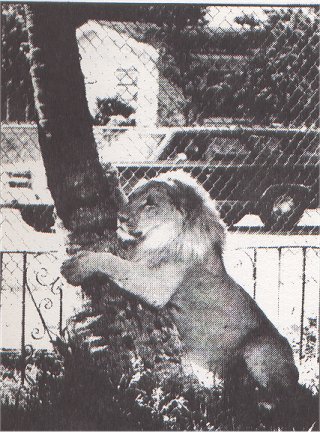 Steve Sipek dreamed of having a lion since he was a boy admiring Johnny Weissmuller in the Tarzan movies. He eventually got to play Tarzan himself, and he got his lion, Sampson. |
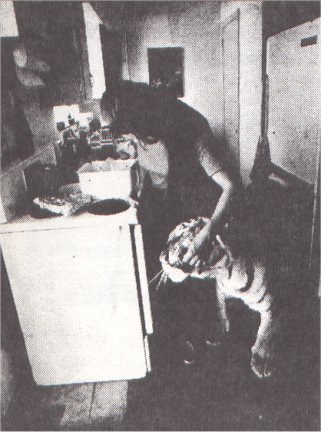 The cats live at Sipek’s home with him and his wife. Steve and Frances are content to live behind heavy fences. . |
 Kitty Swan was Steve’s co-star in “Tarzan and the Rainbow” where Sampson was to rescue them from flames. The stunt literally misfired, and Sampson actually did save them. The actors were burned over 70 per cent of their bodies. |
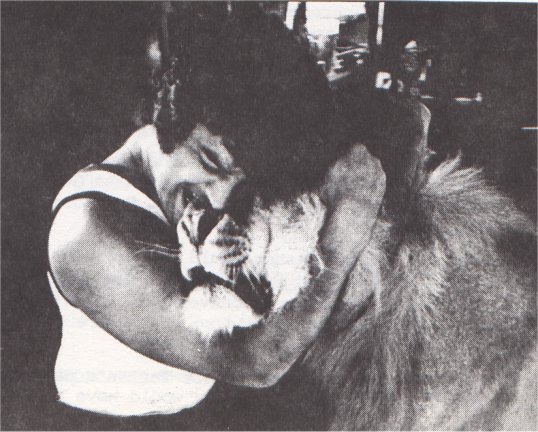 Steve chomps playfully on Sampson’s nose. Steve says training the cats would confuse them. Instead he rewards them for good behavior and spanks them when they’re bad. |
THE FILMSIMDB FILMOGRAPHY
1. Stevie, Samson and Delilah (1975)
2. The Sexiest Story Ever Told (1973)
3. Tarzán y el arco iris (1972) …. Tarzan
… aka Tarzan and the Brown Prince (International: English title)
… aka Tarzan e la pantera nera (Italy)
4. Blood Freak (1972) …. Herschell
… aka Blood Freaks
5. Tarzán en la gruta del oro (1969) …. Zan
… aka King of the Jungle (USA: video title)
… aka Tarzan in the Golden Grotto (USA: literal English title)
… aka Zan, King of the Jungle
… aka Zan, re della giungla (Italy)
6. Desire Under the Palms (1968) (uncredited)
7. Odd Triangle (1968) (as Steve Pipick) …. Carl Parker
… aka Curious Triangle (USA: alternative title)
8. The Walls Have Eyes (1964) …. Jack CohenDirector:
1. Stevie, Samson and Delilah (1975) (as Steven Hawkes)
2. Blood Freak (1972)
… aka Blood FreaksWriter:
1. Blood Freak (1972) (writer)
Producer:
1. Blood Freak (1972) (producer)
Self:
1. “100 höjdare” …. Himself – Guest (1 episode, 2008)
– Världens skönaste land – Del 4 (2008) TV episode (as Steve Sipek)
Place of Birth: Croatia
Birth Name: Steve Sipek
| Mini Bio Born in Eastern Europe, Hawkes immigrated to America as a teenager to pursue an acting career citing Johnny Weissmuller as a childhood influence. He played a Tarzan type character in a series of Spanish language movies. In Spain his character was referred to as Tarzan, but when they were released in English language territories they directly avoided mentioning the Tarzan name, instead referring to Hawkes character as Zan of the Jungle. In 1971 he played the lead in the much loved exploitation movie Blood Freak in which he turns into a monster turkey. In the mid-Seventies he was badly burnt in an on-set accident putting an end to his acting career. Now completely retired, today he runs an animal sanctuary out of Florida. IMDb Mini Biography By: Antony Butcher
Trivia On July 19, 2004, 6 days after his pet tiger Bobo escaped from his compound in Loxahatchee, Florida and was shot and killed, his house caught on fire. He recently had a new air conditioner installed, and it apparently malfunctioned and sparked the blaze. Crews had a hard time getting to the fire because Sipek has electrical fencing to keep his other exotic animals caged in. But the fire was eventually extinguished, and all animals on the property were reported in good condition. He resides in Loxahatchee, Florida |
NEWSPAPER CLIPPINGS
Tarzan in FloridaThe latest in a long line of movie Tarzans and Janes, plus a supporting cast of Italian actresses, directors and other members of a motion picture making crew quietly slipped into Dunnellon, Florida. About as inconspicuous as a wart on the Queen’s nose, they scurried here and there, purchasing the necessities for building a tree house and other sets on the Rainbow River.Tarzan, who’s built like Tarzan should be, with a 51 inch chest measurement (normal), nonchalantly strolled about town with his pet lion. Kids asked for his autograph and received an unintelligible scrawl after being asked, “How did you know I’m Tarzan?” The film according to one source, is being filmed for foreign distribution with the original dialogue to be in English and the foreign language dubbed in later. According to another informant, Martinez is quite impressed with the Dunnellon area and is even thinking of setting up studios there.
Tarzan Film Stars Recuperate Following ExplosionFIRE VICTIM — Steven Hawkes, playing the role of Tarzan in a movie being filmed at Rainbow Springs and Dunnellon, along with Kitty Svanholm as Jane, is steadily improving at the University Medical Center in Gainsville following the accidental explosion of gasoline soaked leaves in a “torture by fire” scene. Both of the young actors were burned over 90 percent of their bodies before a film crew could extricate them from their bonds. Hawkes is expected to be able to return to work sooner than Miss Svanholm who is not expected to be able to return to work for at least three months.
Production of TARZAN AT THE RAINBOW a movie being filmed on location at Dunnellon and Rainbow Springs by an international group, continued as the stars of the film recuperated at the University Medical Center in Gainsville, Florida.Tarzan, portrayed by Steve Hawkes, 28, and his leading lady, Kitty Svanholm 26, as Jane, were seriously burned last Saturday during the filming of a torture by fire sequence at Rainbow Springs.
Four other members of the film crew, including Rene Martinez, the director, and Mahnahen Velasco, assistant director, also received minor burns and were released after being treated at Munroe Memorial Hospital in Ocala, Florida.
The actress, who received especially severe burns about the feet, is not expected to be able to work for at least three months.
The near-tragedy occurred while Tarzan and Jane were tied to stakes and a tree in the torture scene. Gasoline soaked leaves surrounding them exploded when ignited by a torch as the group prepared to shoot the final sequence after several rehearsals.
Hawkes, Yugoslav, and Miss Svanholm, from Sweden, both scantily costumed for the scene, received burns over 90 percent of their bodies, but reports from members of the cast indicate that neither suffered serious facial disfigurement.
Members of the cast and crew praised the cool-headedness of Fred Blair, attractions supervisor of Rainbow Springs who is also serving as an assistant director for the film, and Assistant Director Velasco, during the near panic which followed the explosion.
The movie is being produced by NEW ERA PRODUCTIONS, based in MIami, Florida and Madrid, Spain. The 20-member group on location here is made up of Cubans, Italians, Swedes and Yugoslavian nationals and refugees.
Jungle river sequences of the film were shot on Monday and Tuesday along the Withlacooche River, using an old phosphate pit close to the center of Dunnellon, as the simulated site of a tropical lagoon. Angel Del Pozo, as the white animal hunter, and Agata Flori as his Philadelphia-born wife, were featured in the scenes along with three elephants form the Husley Brothers Circus.
The crew of NEW ERA PRODUCTIONS plan on going to Bogota, Columbia to finish shooting scenes there, while Tarzan and Jane are recuperating.
ZAN, KING OF THE JUNGLE(aka Tarzan in the Golden Grotto) (1970)
A Spanish-Italian Tarzan rip-off from director Manuel Cano. Zan (played by Steve Hawkes) is a white man, who happens to be king of the jungle. But the black natives want him dead, so they can get after the treasure of the Amazons. Zan befriends the Amazon queen (Kitty Swan), who tells him the secret of the treasure. Later, Zan is shot by one of the blacks, but is saved by an old gold prospector. Zan repays him with some of the gold, but when the old man returns to town the jealousy of some locals are incited, and they kill him to find out where the gold is hidden. Matters are further complicated when the prospector’s daughter shows up, to find her father and bring him back to civilization. But the criminals have set their eyes on her as well. Also starring is Antonio Casas, Jesus Puente, Fernando Sancho, Krista Nell, and others. Written by Umberto Lenzi.
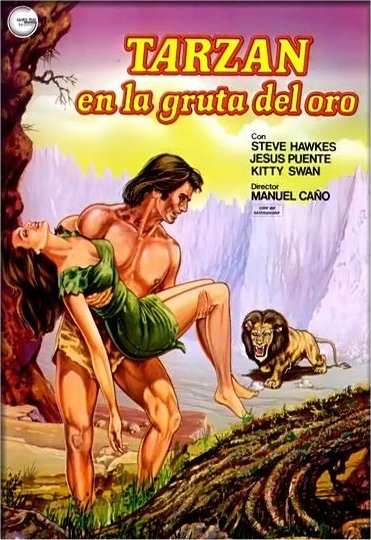 |
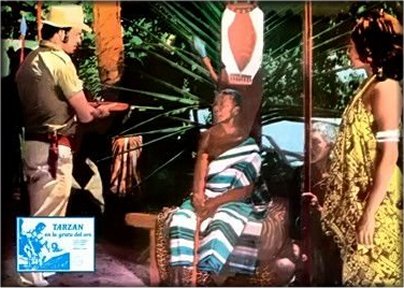 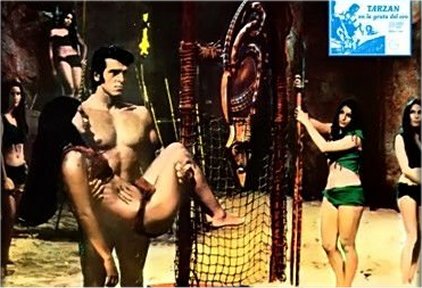 |
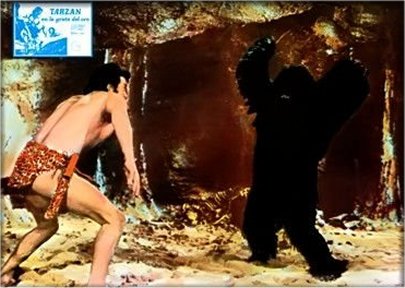 |
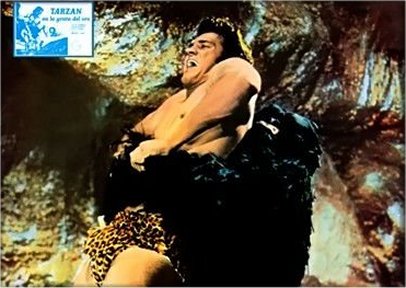 |
 |
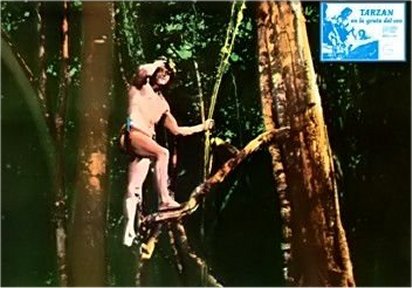 |
TARZAN AND THE BROWN PRINCE (aka Tarzan and the Rainbow) (1972)
A jungle adventure starring Steve Hawkes, Kitty Swan, Peter Lee Lawrence, Angel del Pozo, Agata Flori, and others.
Directed by Manuel Cano.
TARZAN AND THE BROWN PRINCE
Also known as: Tarzan and the Rainbow.
A review by Orvy Jundis ~ Reprinted from the Jasoomian 1973The movie version of TARZAN AND THE BROWN PRINCE was filmed in the jungles of South America. Steve Hawkes portrayed Tarzan and Robin Aristorenas played the part of Nasu, the Brown Prince.The film was based on the comic book novel that was serialized int eh Philippines. The art work was done by Franc Reyes. The script was written in Tagalog, the main dialect of the country. The serial appeared weekly and ran for sixteen weeks..
The story deals primarily with the adventures of Nasu, a young boy, and his rival and opponent Ukali, a big and mean warrior. Both are in contention for the empty throne which was left vacant by the death of the old chief. In order to become king the contestants must go through a series of tests. The winner gets the throne.
The comic book version contains many exciting scenes such as Tarzan fighting a crocodile, stampeding elephants, and a wild helicopter ride culminating into an explosion when the copter loses control and rams into a giant tree.
ERB HEROINES of ~ HEARTH ~ STAGE ~ SCREEN ~ RADIO
http://www.erbzine.com/mag6/0608.html
| 1. ZAN, KING OF THE JUNGLE ( TARZAN & THE GOLDEN GROTTO) 2. TARZAN AND THE BROWN PRINCE (TARZAN & TREASURE OF THE EMERALD CAVE or TARZAN & THE RAINBOW) (1970 & 1972 ~ unauthorized Spanish-made Tarzan movies) Steve Hawkes AMAZON QUEEN & IRULA (JANE): KITTY SWAN Birth Name: Kirston Svanholm While filming Tarzan, King of the Jungle in 1970, on location at Rainbow Springs, Steve Hawkes (Tarzan) and Kitty Swan (Jane) were badly burned. During the filming of a torture scene, the two actors were tied to stakes when gasoline-soaked leaves ignited and both were burned seriously. They were rushed to the University of Florida Medical Centre in Gainsville. They remained there for months for skin graft treatment, while the rest of the crew departed for Bogota, Columbia and on to Spain, to shoot more scenes. (Eventual 1974 release in Spain) MOVIES: Criminali della galassia, 1965 ~ Deadlier Than the Male, 1966 ~ Operation Kid Brother, 1967 |
  |
BLOOD FREAK
A Cult Favourite starring Steve Hawkes as a chicken
(Obviously a non-Tarzan role)
 |
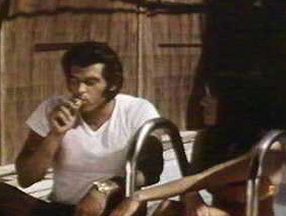 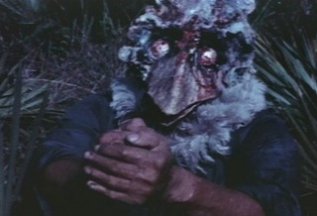 |
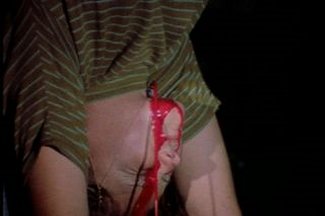 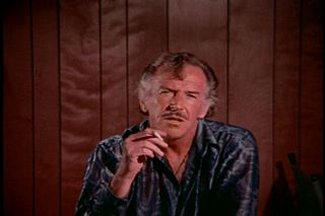 |
Blood Freak (1972)
A Dracula On Drugs!
Only the blood of drug addicts can satisfy the thirst of the blood freak monster!
Directors & Writers: Brad F. Grinter ~ Steve Hawkes
Cast: Steve Hawkes as Herschell | Dana Cullivan | Heather Hughes | Bob Currier | Anne Shearin . . . more>>>
Plot: IMDBThere’s probably no other movie like this one anywhere in the world. Not even the Turks, as laughingly inept as THEY are at committing films to celluloid could dream up anything this unintentionally hilarious. I’m only scratching the surface here. This might in fact be the Holy Grail of bad/good horror movies, respect due to “Creeping Terror” and “Plan 9 From Outer Space”.Herschell, a muscular Elvis lookalike with an Eastern Bloc accent and horrible burn scars, hits the Florida highways on a chopper he’s about a hundred pounds too big for when he comes upon Angel, a damsel in distress having car trouble. He gives her a lift to her house, where a groovy drug party is going down, hosted by her sister Ann, a seventies-tastic young thing with Sharpied-on eyebrows and a room full of fifty-year-old friends. Herschell soon learns that Angel is a bible-quoting do-goodnik, and her sister Annis a party girl. Though Herschell is more interested in the scripture-quoting Christian, Ann sneakily wins his affections by conning him into toking a doobie by the pool. Only the joint in question turns Herschell into a simpering junkie in the span of ten minutes or so. Meanwhile the girls’ father gets Herschell a job at a nearby turkey farm as a human guinea pig, where two turkey scientists feed our hero chemically-altered turkey meat. They even offer him some drugs as an added perk.
After consuming an entire drug-laden turkey wrapped in tin foil (with no side dishes or drink to wash it all down), Herschell collapses in the grass, in a dope induced twitching spasm, and blacks out. When he comes to, he finds that some wise guy has replaced his normal head with an oversized papier mache turkey head with fangs and ping pong ball eyes. Now a terrifying titular blood freak, he sets out to hang dope-loving hippies from a ladder, sloppily drinking their blood (which spurts from a hose under their shirt) in cupped hands as a stock terror shriek is played repeatedly, even when the hippie in question has her mouth closed. In a mire of despondency and gorged on drug-blood, Herschell lumbers back to Ann in hopes she can save him from his current low state. Despite his horrifying feathery appearance, Ann turns the lights off and fucks the turkey monster (…”Oooh,Herschell,oooh”…”gobblegobble”) before gathering her long-haired buddies to collectively drum up a plan to save Herschell’s life.
The blood freak escapes to murder a drug dealer, circular sawing off the poor bastard’s prosthetic leg,leaving him to drown in stage blood,clutching the plastic stump and screaming for a minute straight before finally joining the choir invisible.He then kills another junkie broad and an elderly onlooker before incurring the wrath of an enraged overweight redneck,who hops a fence and plunges an ice pick into one of the fiend’s ping pong eyes.The goofy turkey head shows up on a dinner table next to a real cooked turkey,which is savaged bare-handedly by chattery off-camera poultry aficionados.The audience is then revisited by chain-smoking on-screen narrator,Brad Grinter,who rambles incoherently from a script on the table before nearly choking to death in delivering the film’s apparently Christian message. We cut back to Herschell at the turkey farm — unconscious from his drug spaz — and find that the whole turkey nightmare was merely a badly filmed psychotic hallucination, spurred on from a reaction of the turkey drugs and marijuana. At the close, Herschell and Ann find a better life through Christ, our lord. Amen. Cue the groovy acid rock guitar score.
A More Recent Steve Hawkes (Sipek) News Story
Officers kill escaped tiger, said animal lunged at them
A distraught Steve Sipek speaks to the media about the killing of his pet tiger, Bobo on Tuesday.
2005 ~ USA Today
LOXAHATCHEE, Fla. (AP) — The owner of an escaped tiger fatally shot by wildlife officers said Wednesday that he believes someone opened several gates, enabling the big cat to get out.Steve Sipek, an actor who once played Tarzan, said the gates would have had to be opened before the 6-year-old tiger, named Bobo, could have reached the 12-foot wall surrounding his property. He did not say who might have done it. “He was let out by somebody who is interested in causing problems,” Sipek told CBS’ The Early Show. Sipek has another tiger, a panther, a cougar and lions on his five-acre compound, which is marked by a sign that reads, “Trespassers will be eaten.” They did not escape. (Related video: Tiger sought earlier)
Willie Puz, a spokesman for the Florida Fish and Wildlife Conservation Commission, said Wednesday that Sipek’s claim was being investigated. He said Sipek has licenses for the big cats, but said he could not comment on whether they could now be revoked because that is part of the investigation.
Bobo was shot and killed Tuesday when officials say it lunged at a wildlife officer who was trying to capture it. But Sipek, who developed a soft spot for jungle beasts after playing Tarzan in B-movies decades ago, said he doubted the tiger had to be killed. He said he would have been able to coax the tiger to safety if officers had called him to the scene before shooting it. “Murder is the word,” Sipek said. “They murdered a poor helpless animal that only looked ferocious, as any tiger would, but Bobo had a heart of gold.”
A dozen wildlife trackers and sheriff’s deputies had searched more than 24 hours for the animal, which escaped Monday. They had kept watch Tuesday in a five-acre area of dense slash pines and palm trees, hoping to catch it. Officers approached the tiger intending to shoot it with tranquilizers. But the tiger jumped at one officer, who fired a shotgun in self-defense, said Jorge Pino, a wildlife commission spokesman. “Needless to say, the owner is very distraught. We’re distraught,” Pino said. “Our concern was to recover this tiger alive and well.”
Sipek says he developed his affection for big cats after one pulled him from a fire on a set more than 30 years ago, saving his life, and he promised then he would always take care of such animals if he recovered. He told ABC’s Good Morning America on Wednesday that wildlife officials had told him they wouldn’t try to capture Bobo until later Tuesday evening, so he went to take a shower. He said he was coming back to rejoin the search when he heard five shots and “my heart sank,” knowing he hadn’t protected Bobo. “I kept my word, except I failed yesterday, trusting people,” he said. He said wildlife officials were laughing after the shooting. “It was a glorified thing for them,” he said.
Puz denied the officers were laughing, saying Sipek was too far away to see the officers’ demeanor, which he described as “somber.” Some nearby residents, who moved to the rural area so they could have room for their own pets, had little sympathy for Sipek, saying his big cats are dangerous. “What I want to know is when he was in captivity, how long did he go without a feeding?” said Kim Smith, who has horses and dogs that she normally keeps outside. “Tigers are predatorial. All of us moved out here because we’re city people wanting a taste of the country. But this is a little funky.”
Wildlife officials had said they did not believe the declawed pet would attack. He was never taught to hunt, and had never killed anything or lived in the wild. However, he did bite a woman working inside his cage two years ago, severely injuring her. An expert on tiger behavior disagreed that Bobo had posed no danger. “Tigers are wild animals and they retain hard-wired instincts and to say just because a tiger doesn’t have his claws — so what? He still has his teeth and they’re powerful,” said Ron Tilson, conservation director at the Minnesota Zoo.
Sipek’s compound sits about 10 miles from West Palm Beach, just off a main east-west thoroughfare. “He never should have had these animals in the first place,” said Andrea Newell, who grew up two doors away and was visiting family on Tuesday. In 1985, a tame, three-legged black leopard belonging to Sipek eluded searchers for nearly three days before being found wandering near a fence on his property.





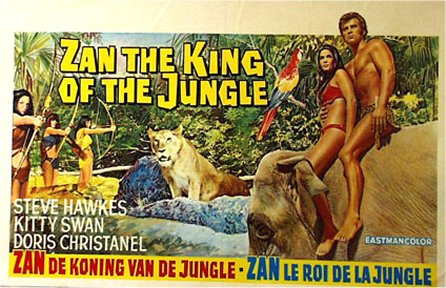
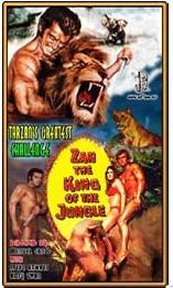
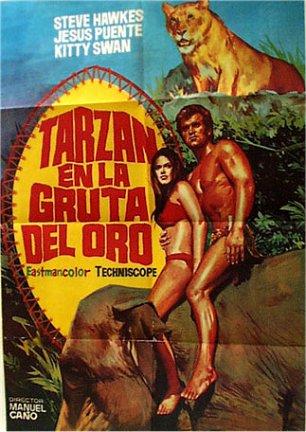
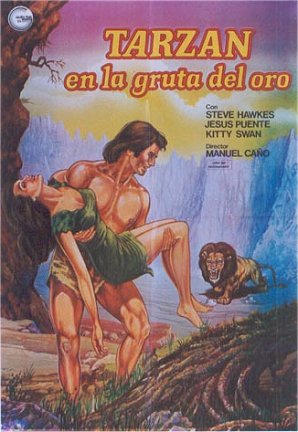
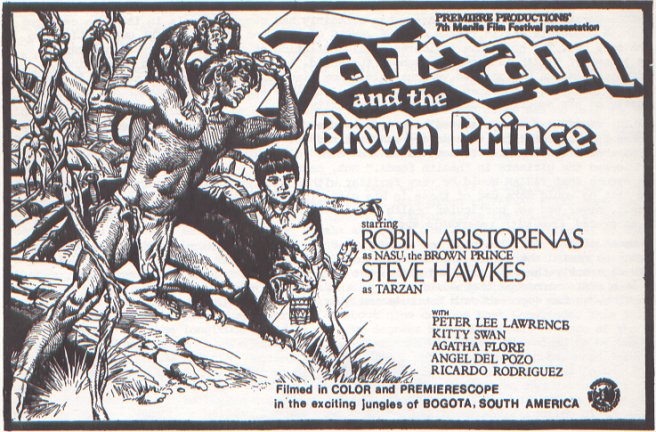
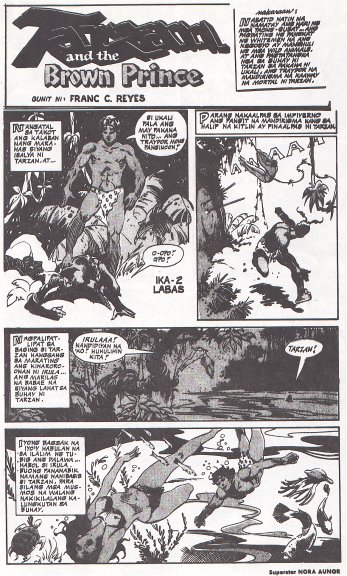
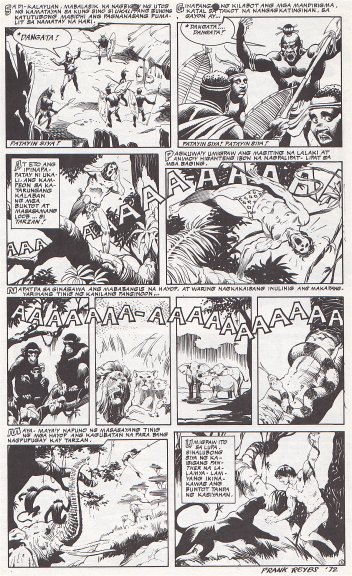
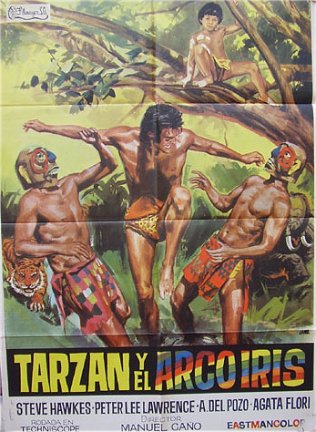

 LOXAHATCHEE, Fla. (AP) — The owner of an escaped tiger fatally shot by wildlife officers said Wednesday that he believes someone opened several gates, enabling the big cat to get out.Steve Sipek, an actor who once played Tarzan, said the gates would have had to be opened before the 6-year-old tiger, named Bobo, could have reached the 12-foot wall surrounding his property. He did not say who might have done it. “He was let out by somebody who is interested in causing problems,” Sipek told CBS’ The Early Show. Sipek has another tiger, a panther, a cougar and lions on his five-acre compound, which is marked by a sign that reads, “Trespassers will be eaten.” They did not escape. (Related video: Tiger sought earlier)
LOXAHATCHEE, Fla. (AP) — The owner of an escaped tiger fatally shot by wildlife officers said Wednesday that he believes someone opened several gates, enabling the big cat to get out.Steve Sipek, an actor who once played Tarzan, said the gates would have had to be opened before the 6-year-old tiger, named Bobo, could have reached the 12-foot wall surrounding his property. He did not say who might have done it. “He was let out by somebody who is interested in causing problems,” Sipek told CBS’ The Early Show. Sipek has another tiger, a panther, a cougar and lions on his five-acre compound, which is marked by a sign that reads, “Trespassers will be eaten.” They did not escape. (Related video: Tiger sought earlier)
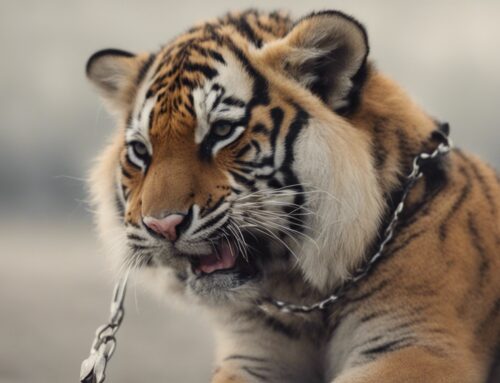

Leave A Comment
You must be logged in to post a comment.